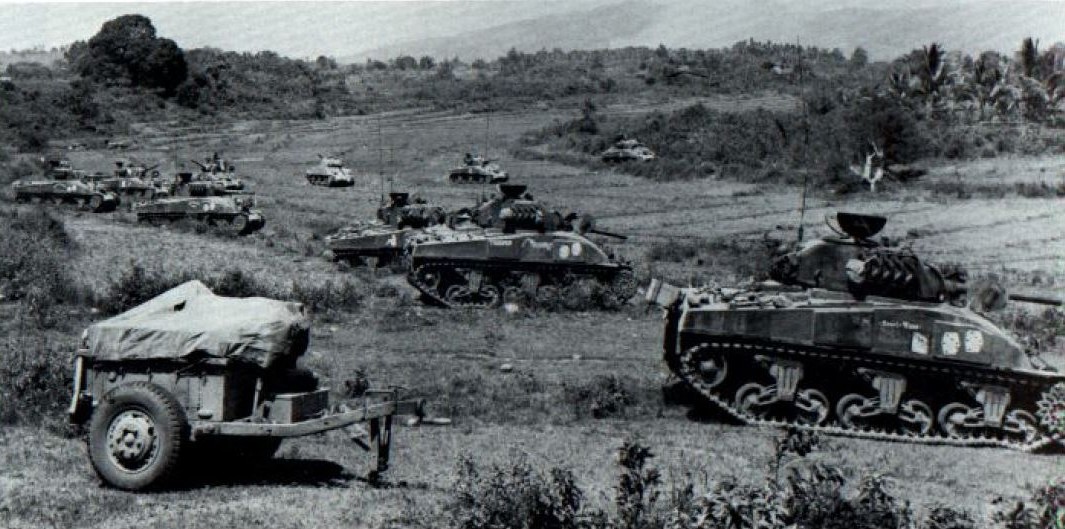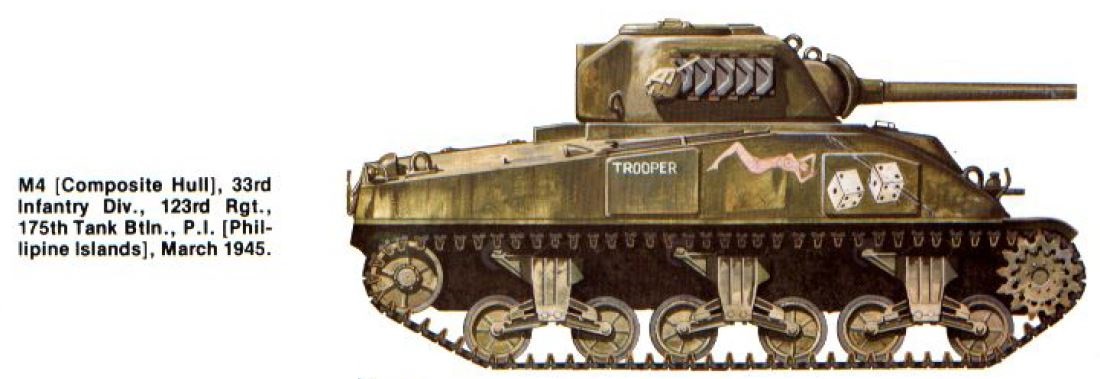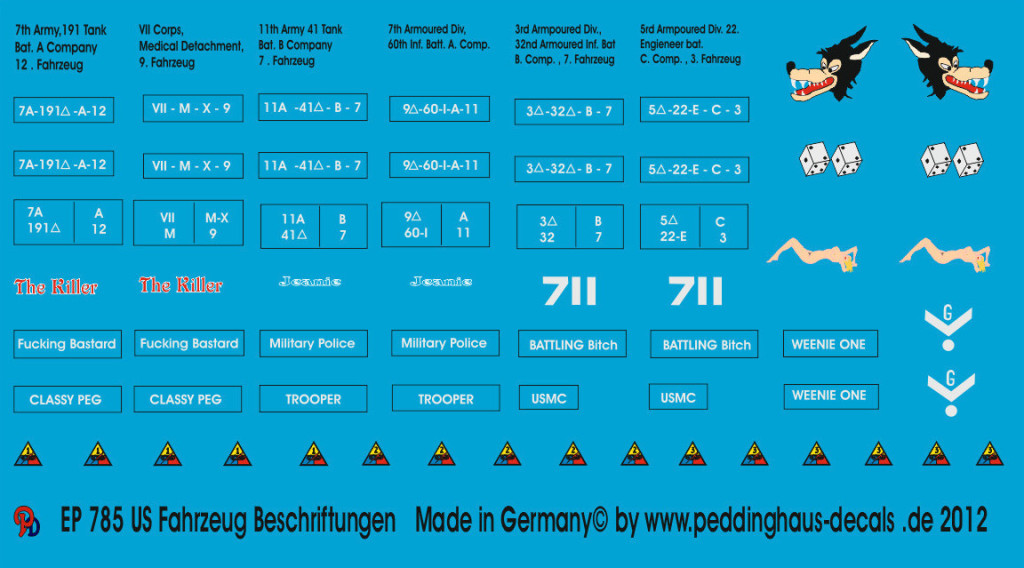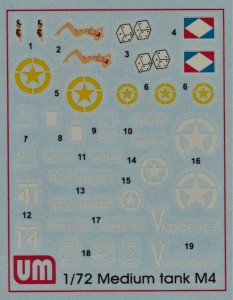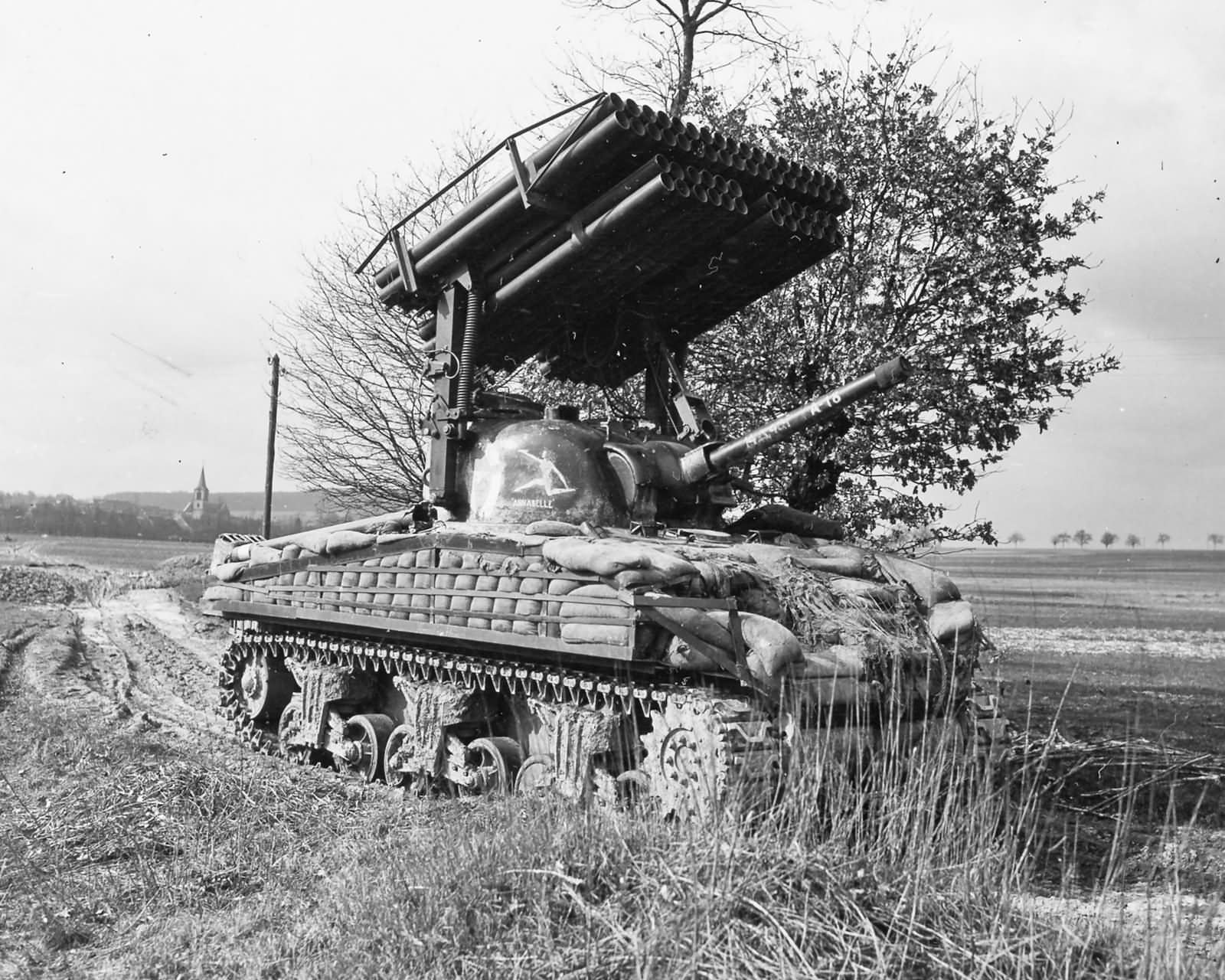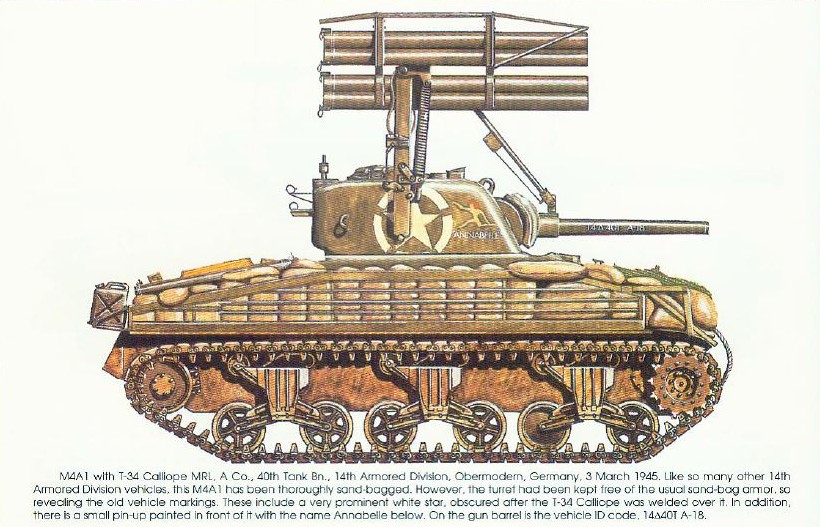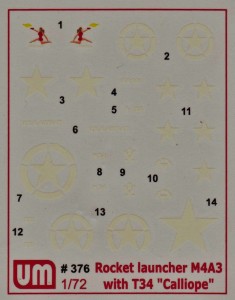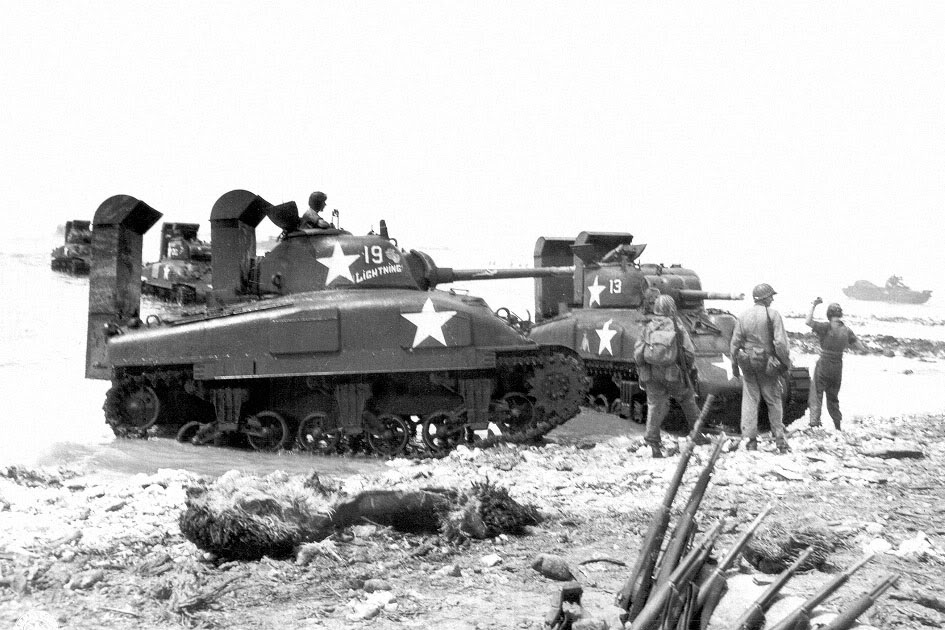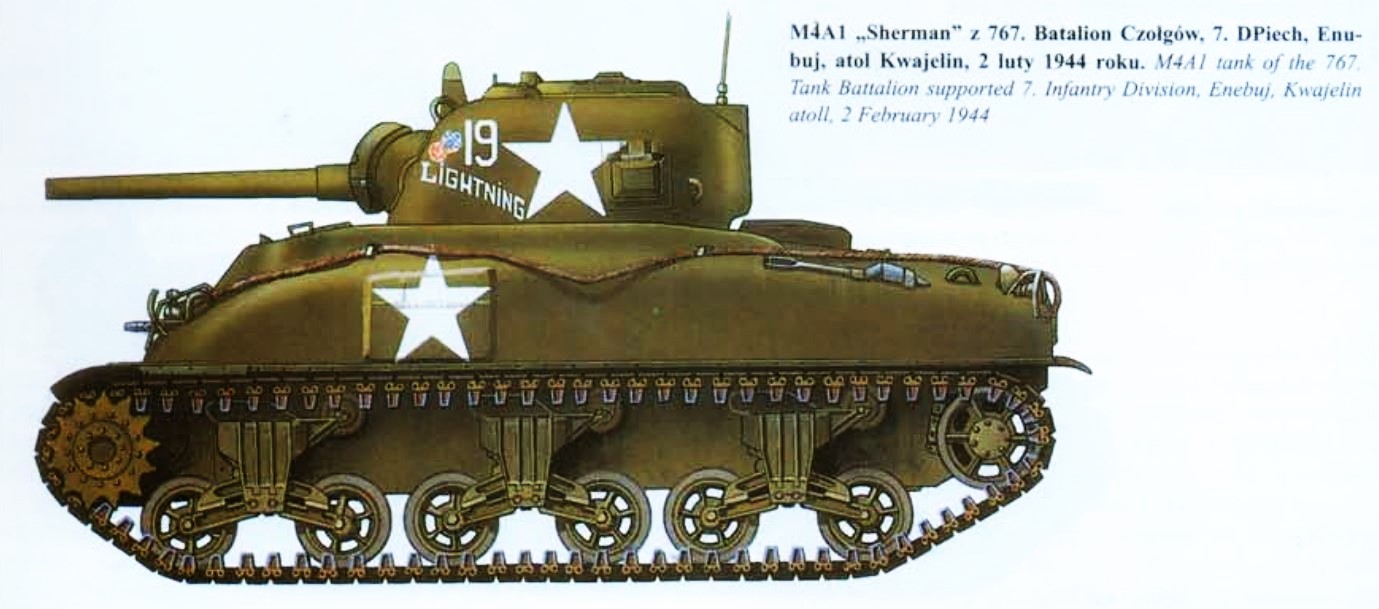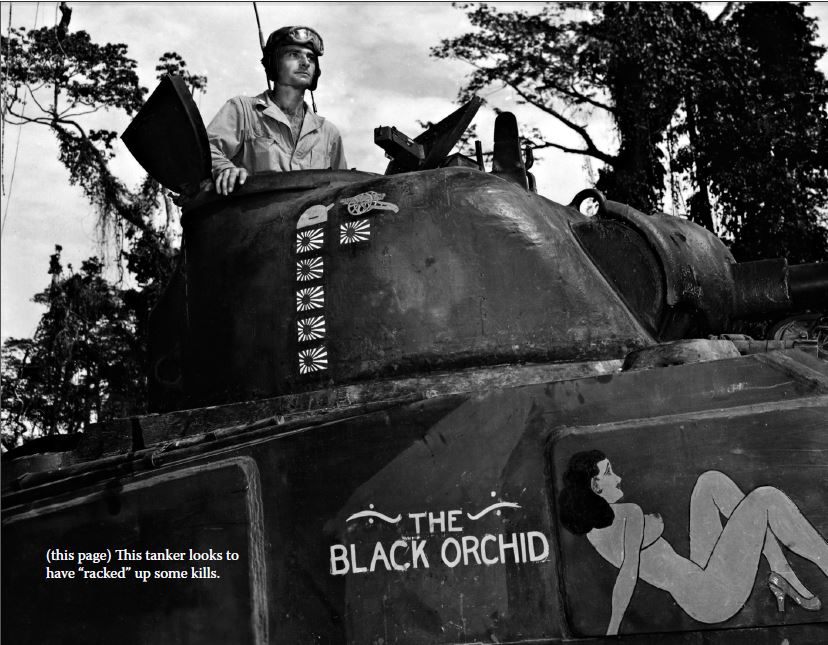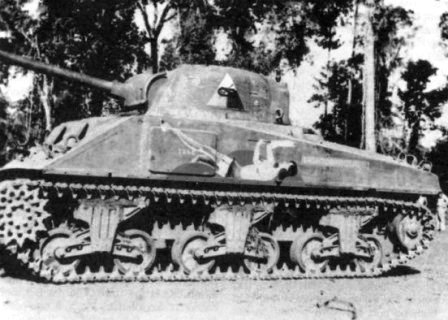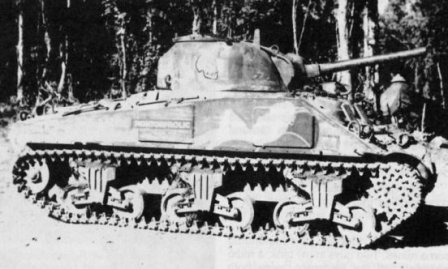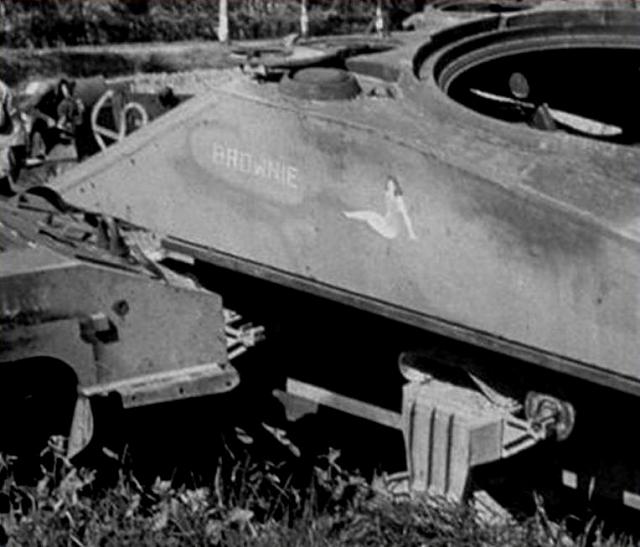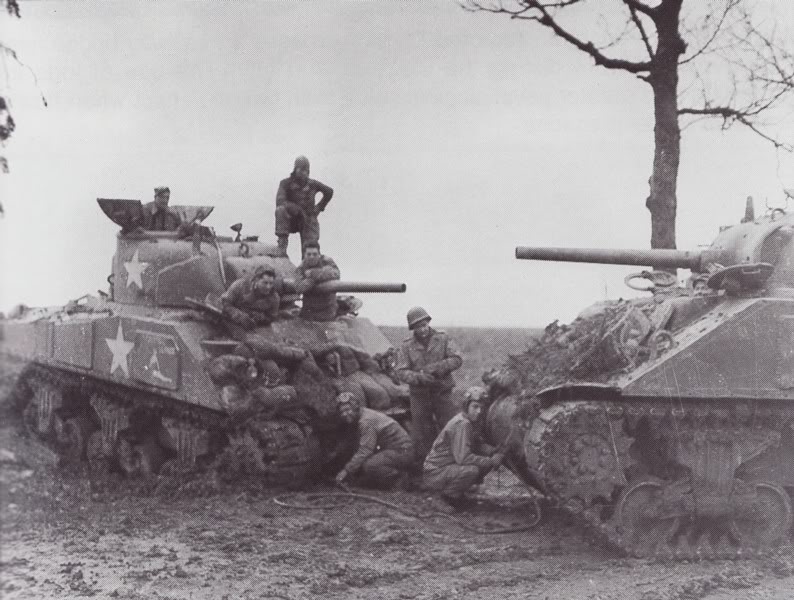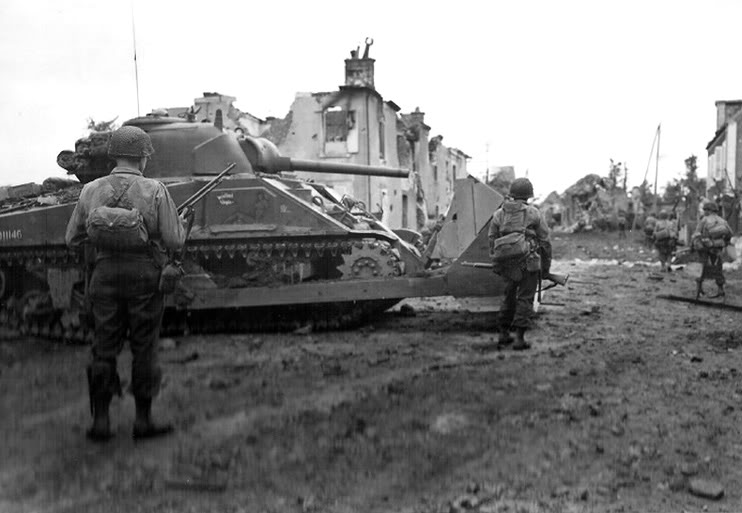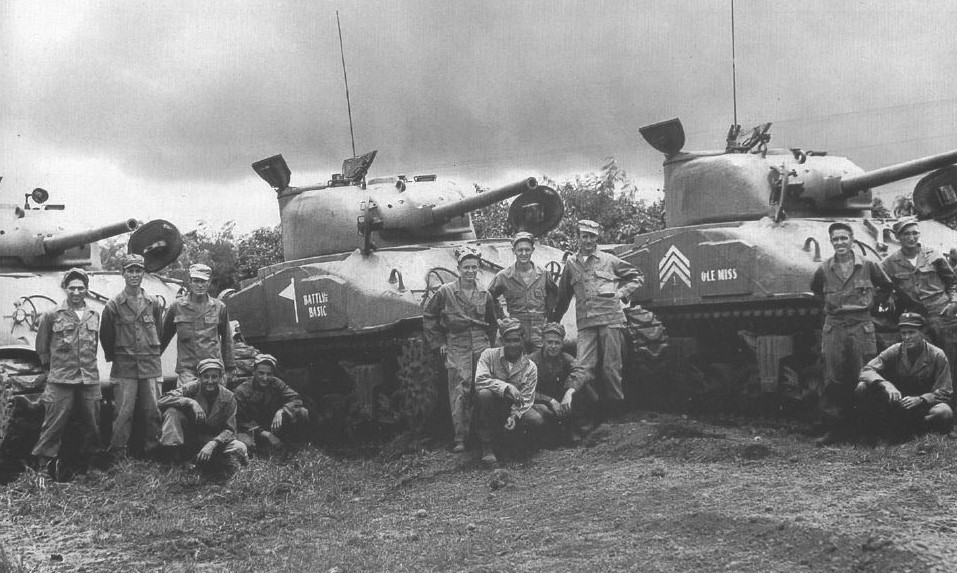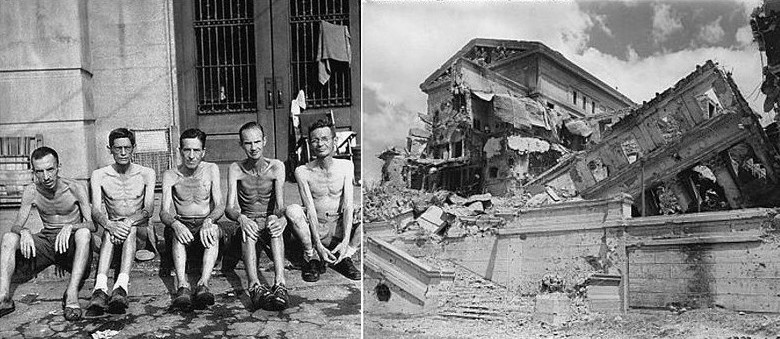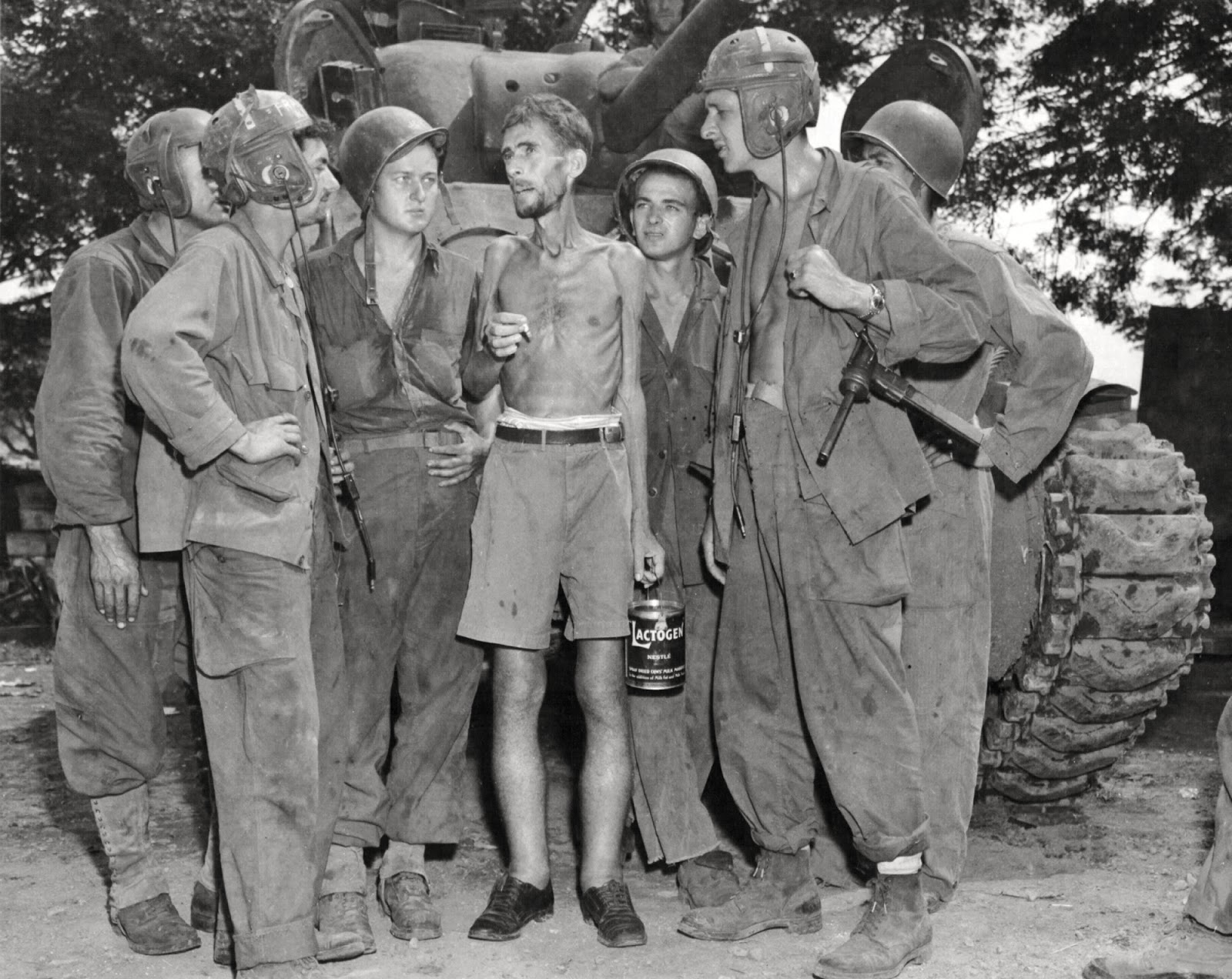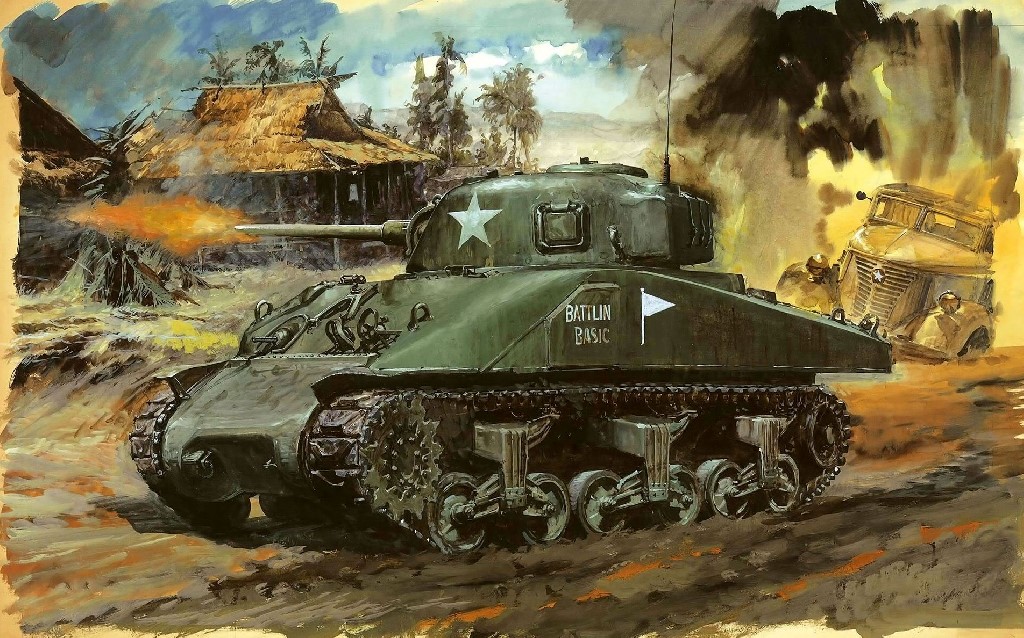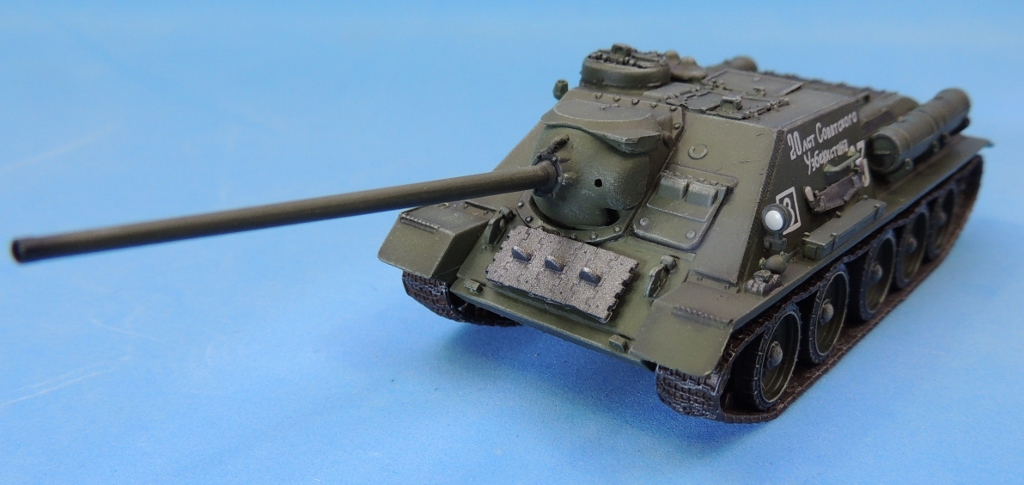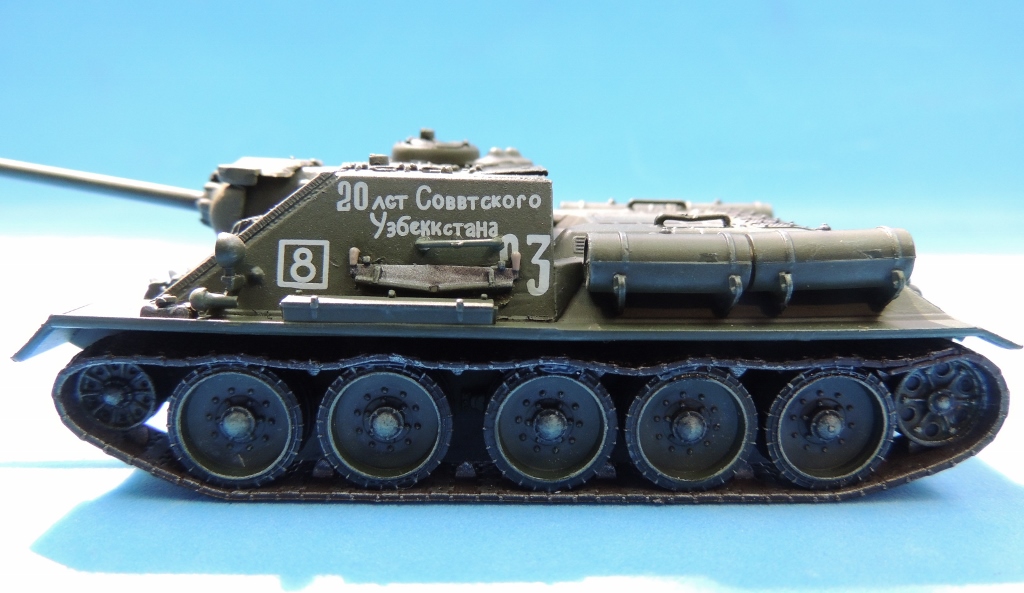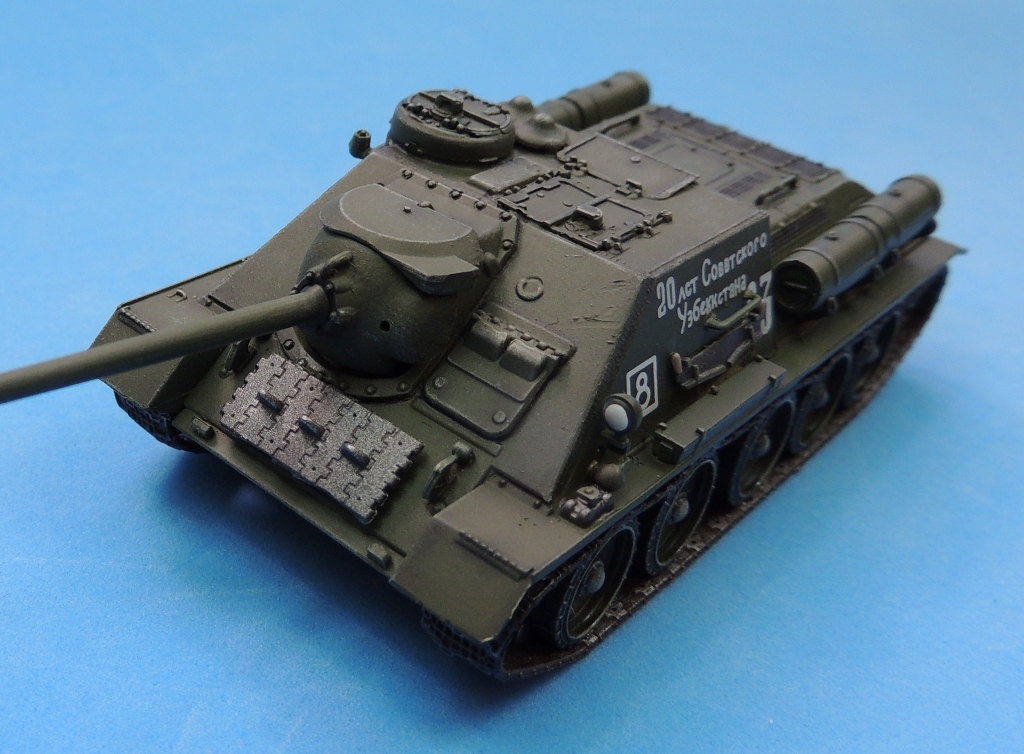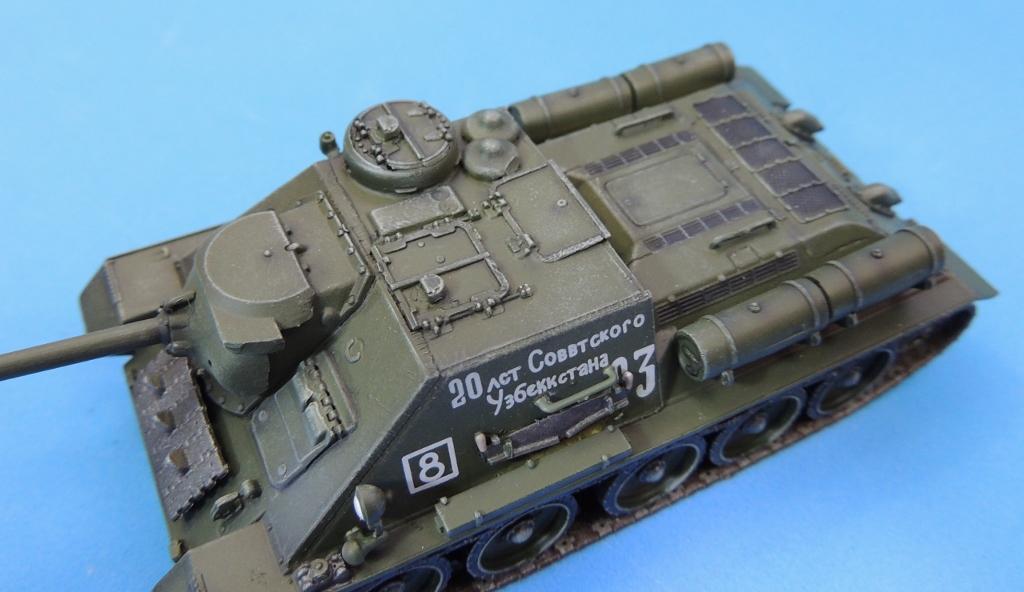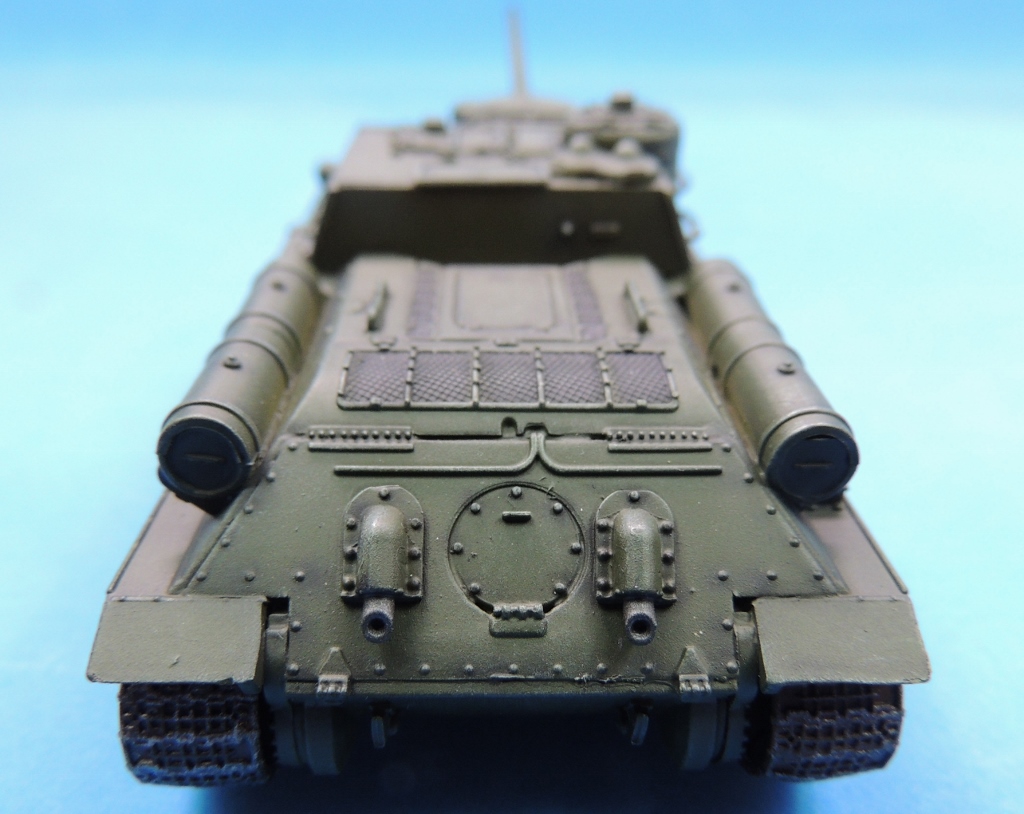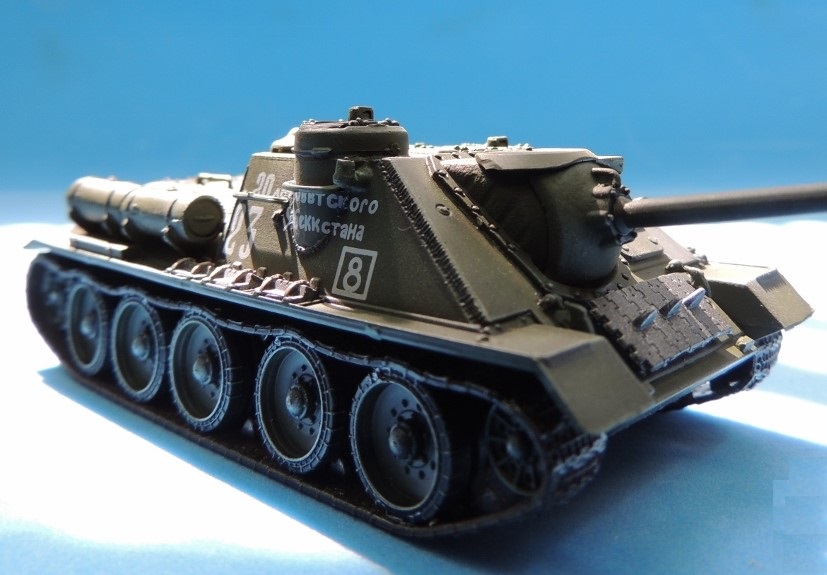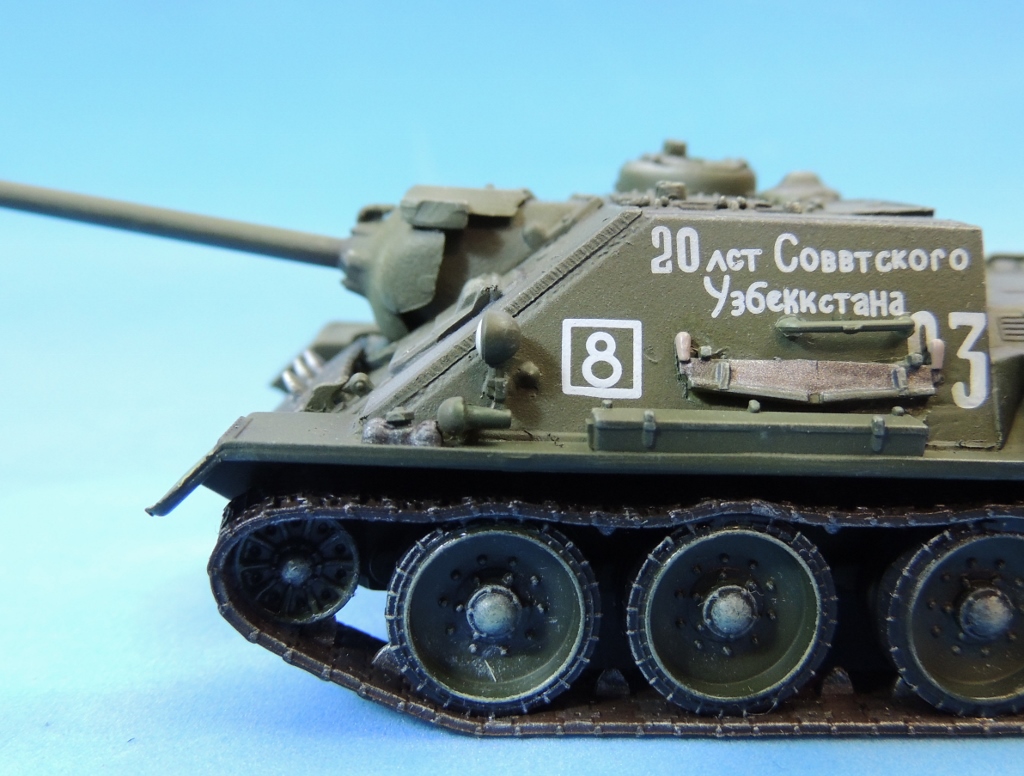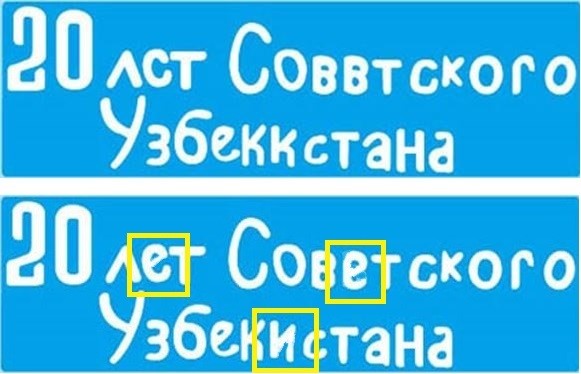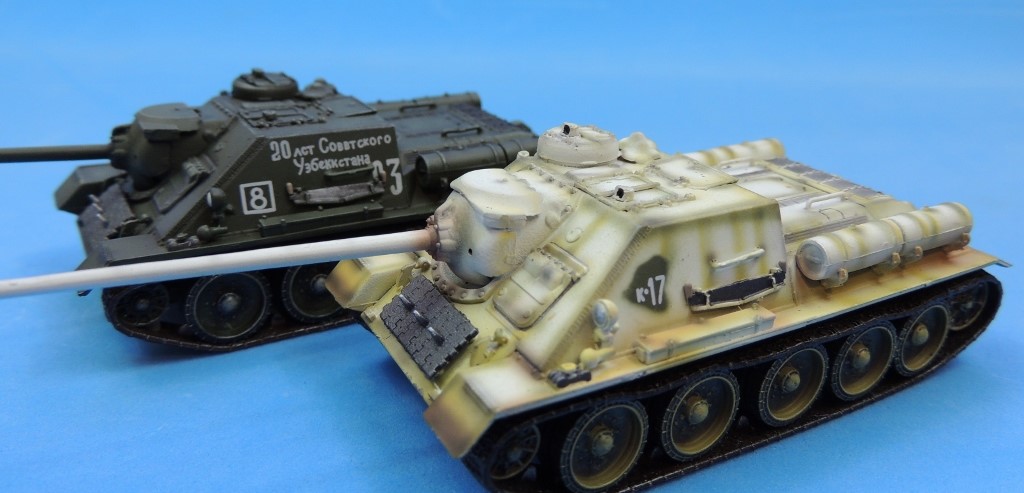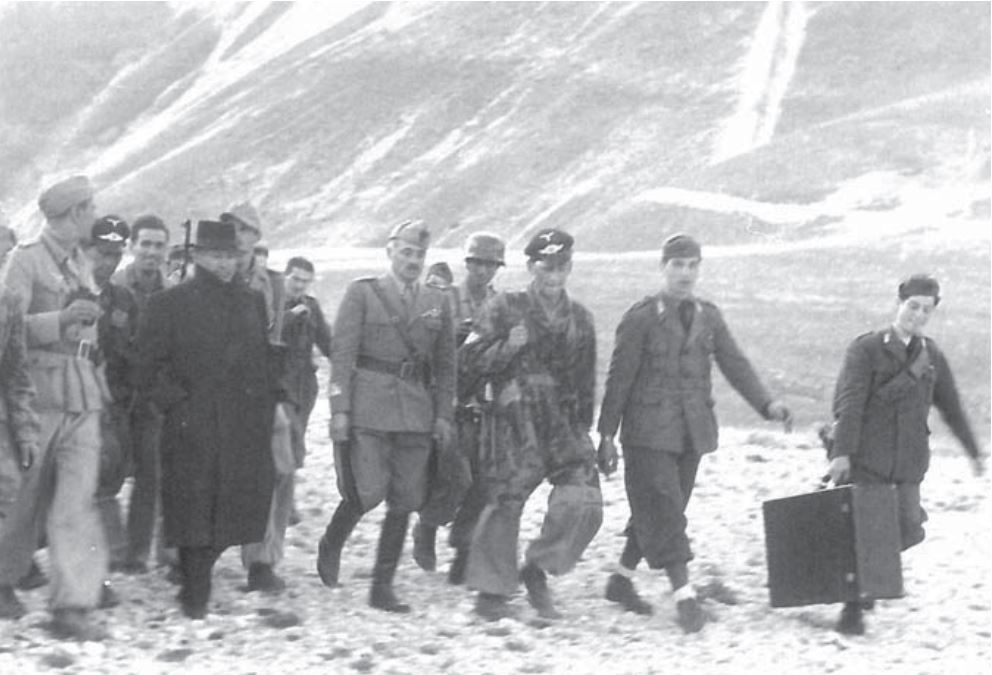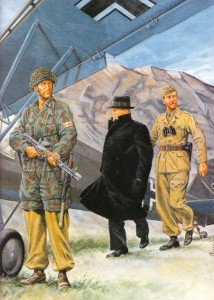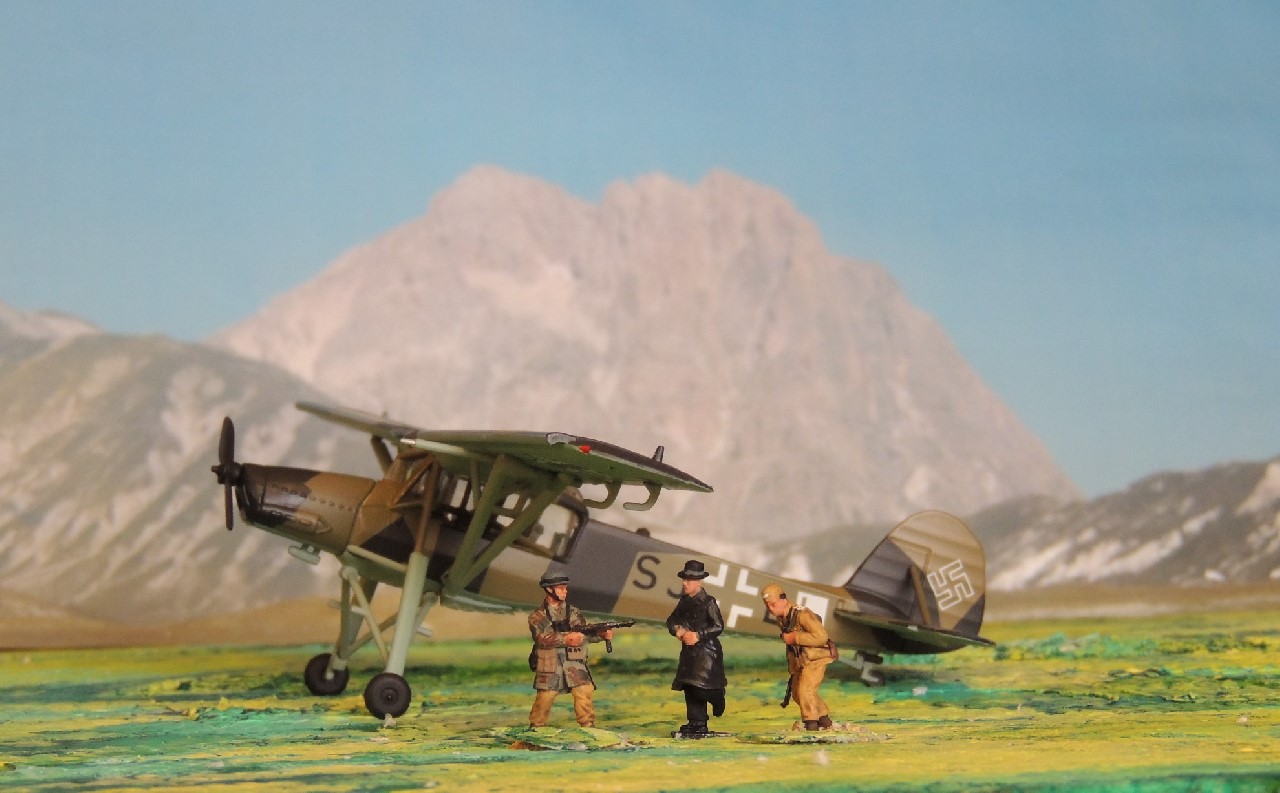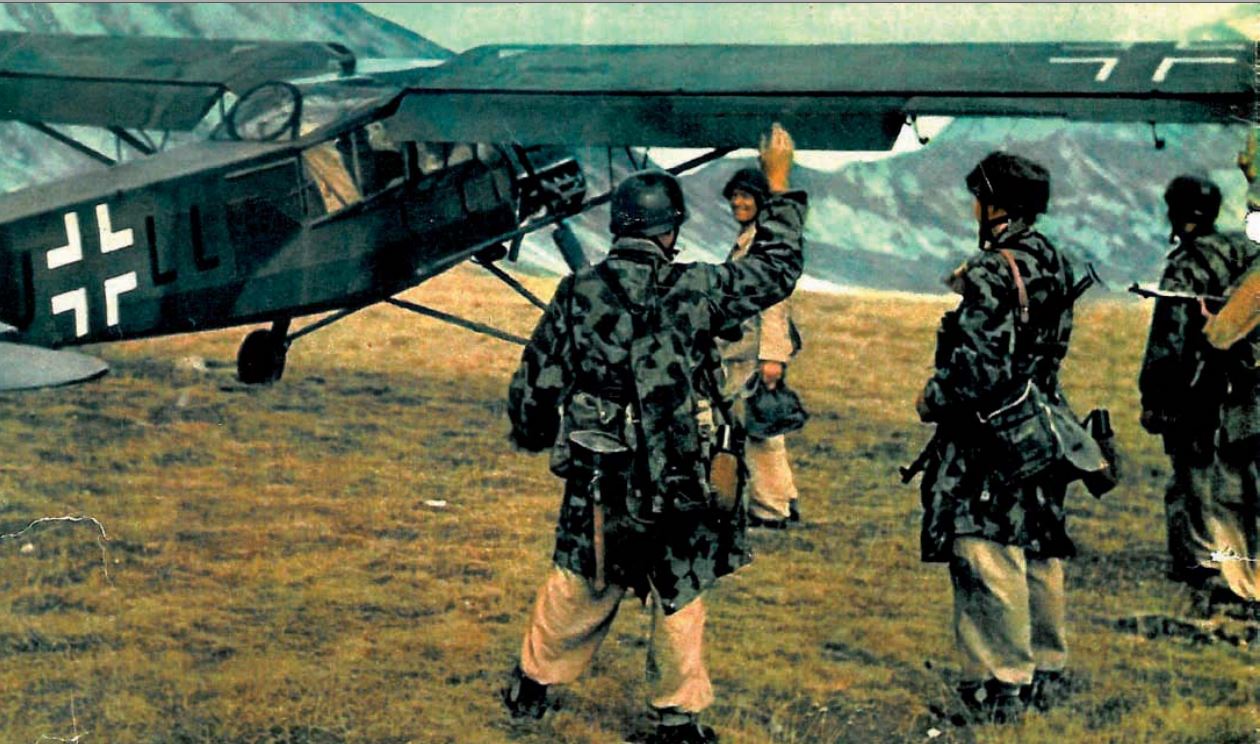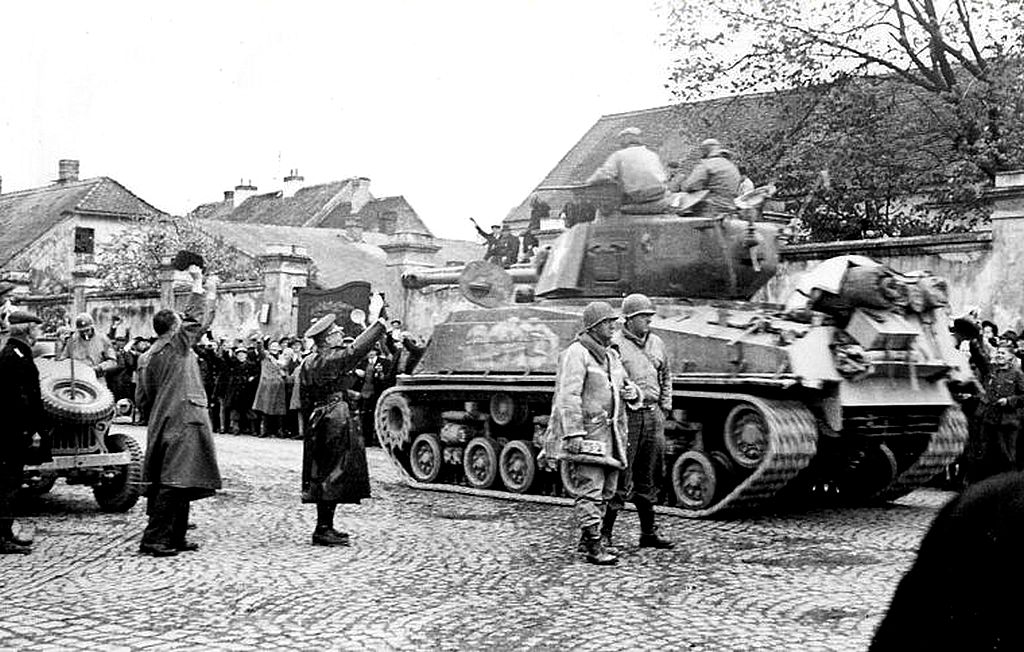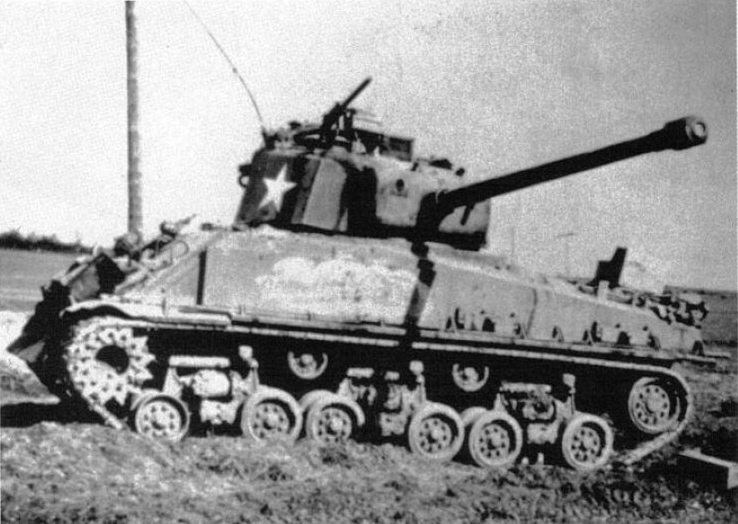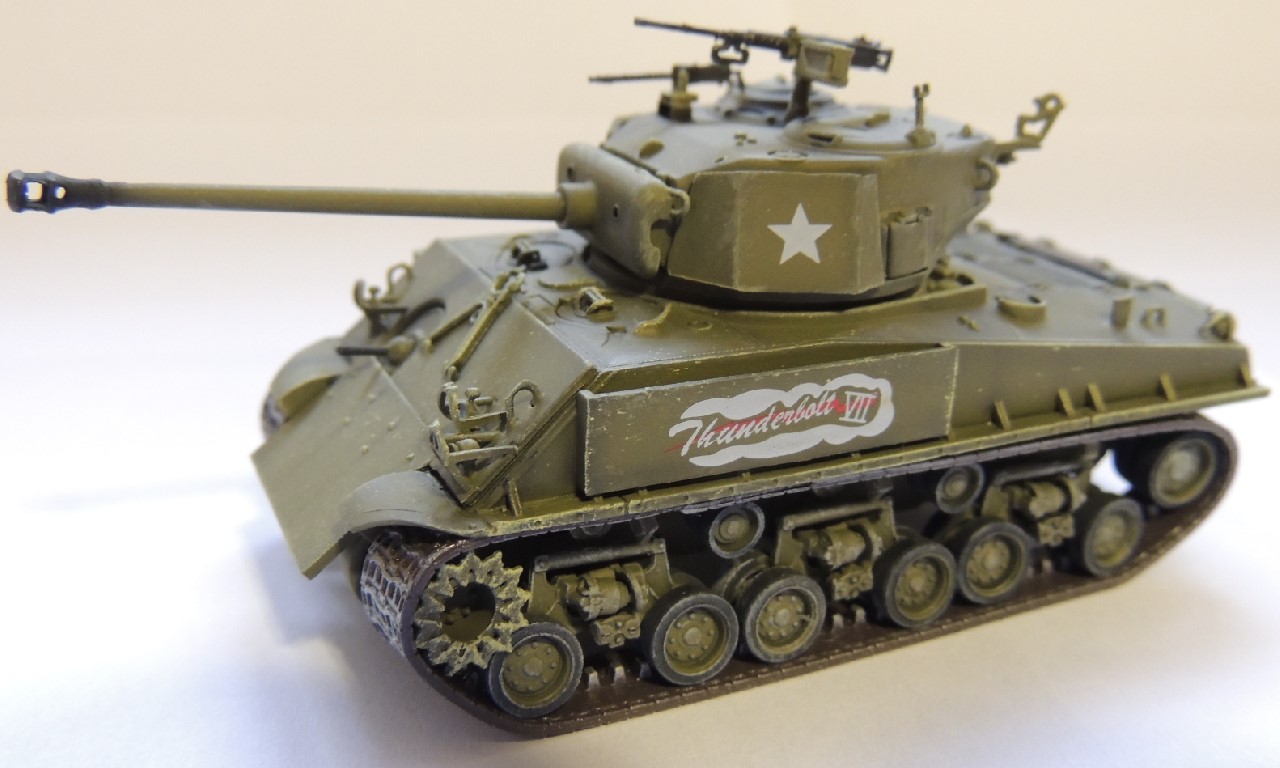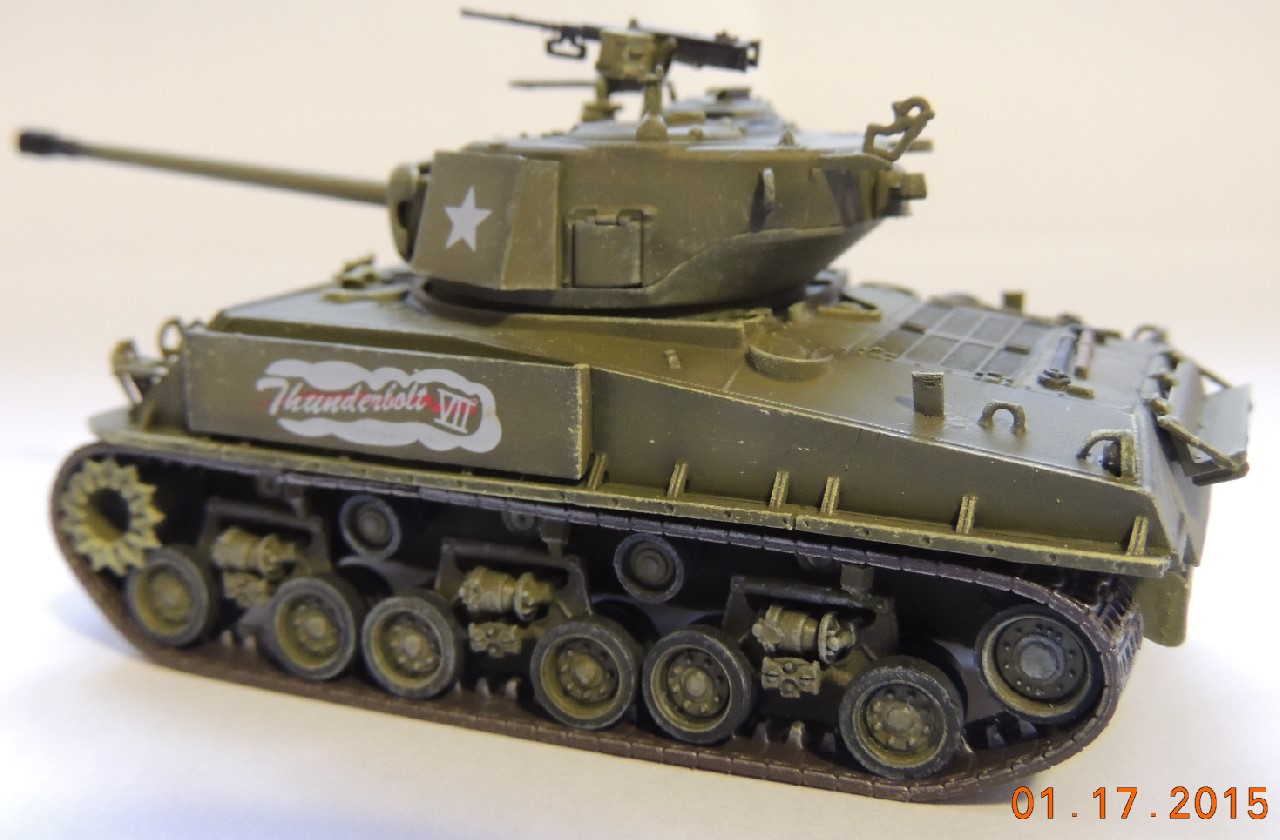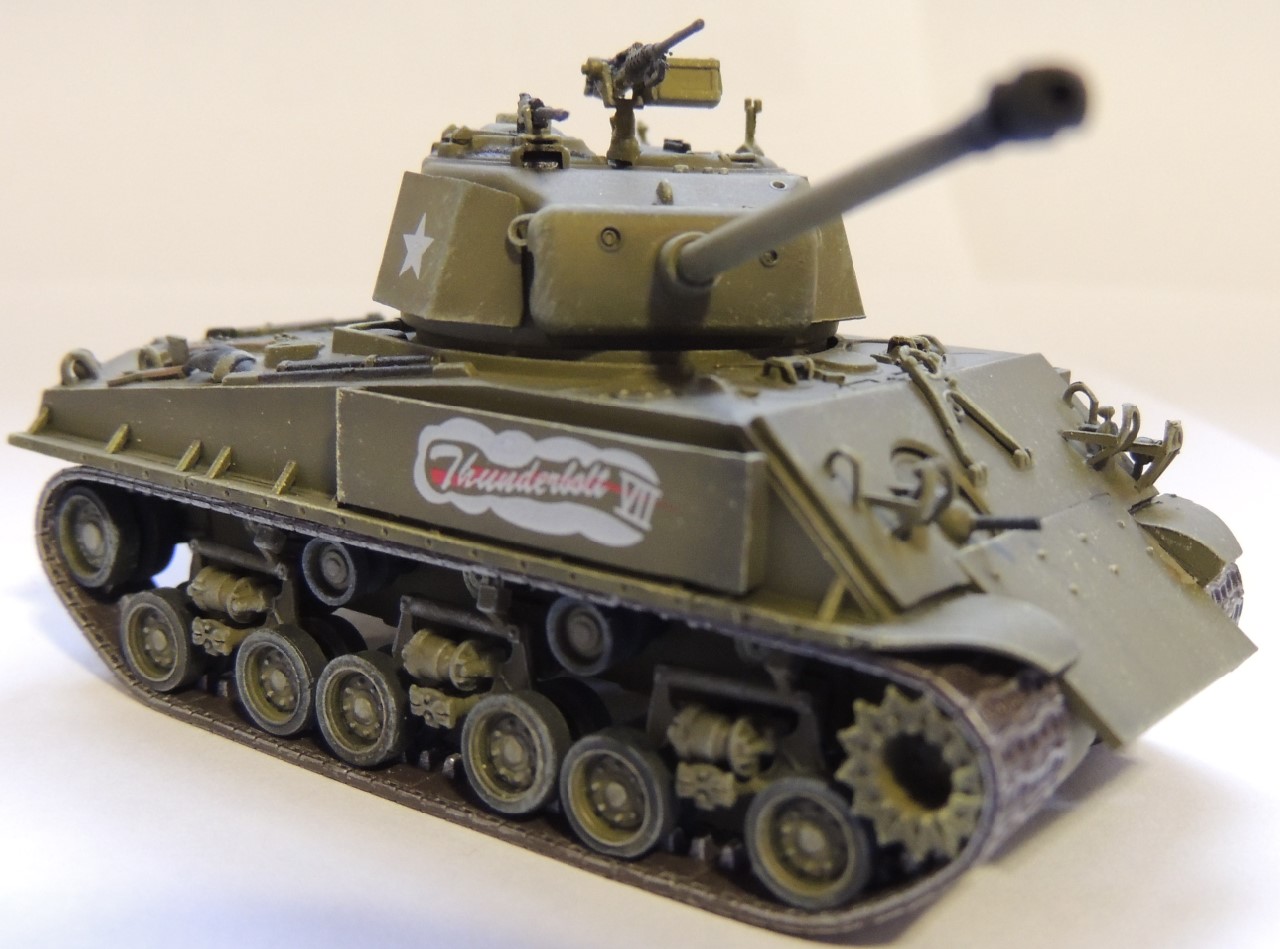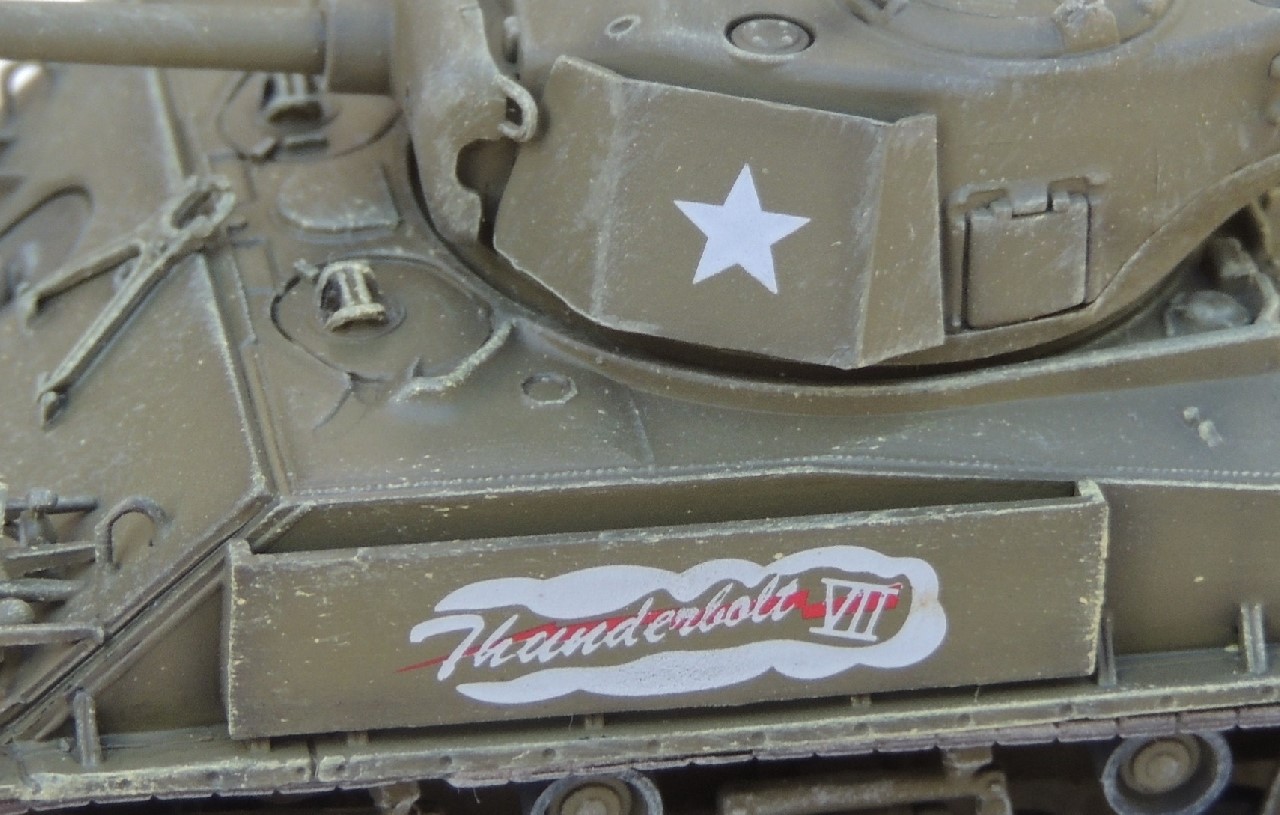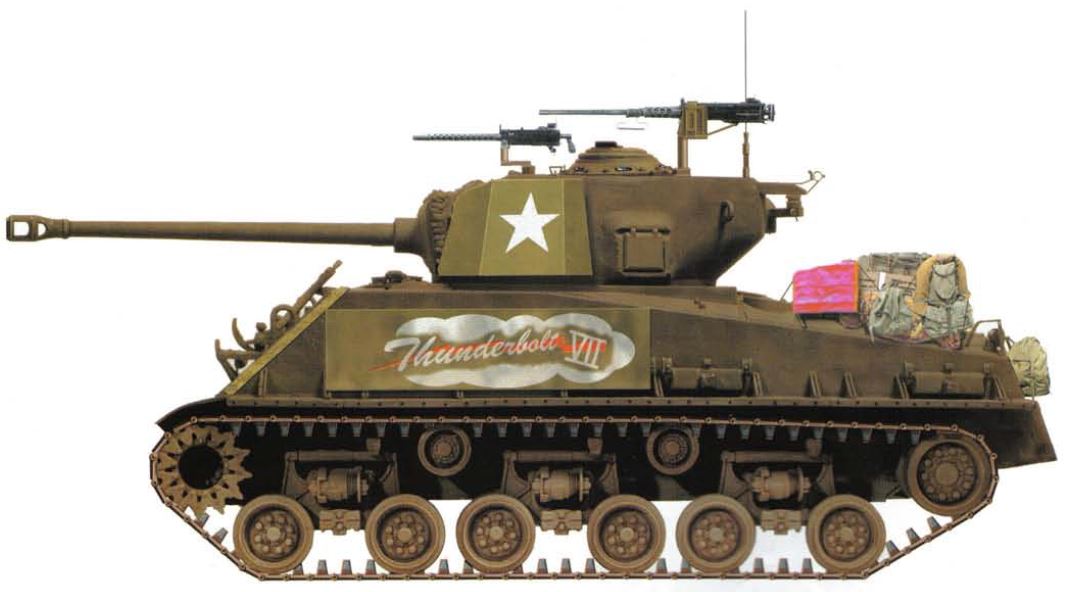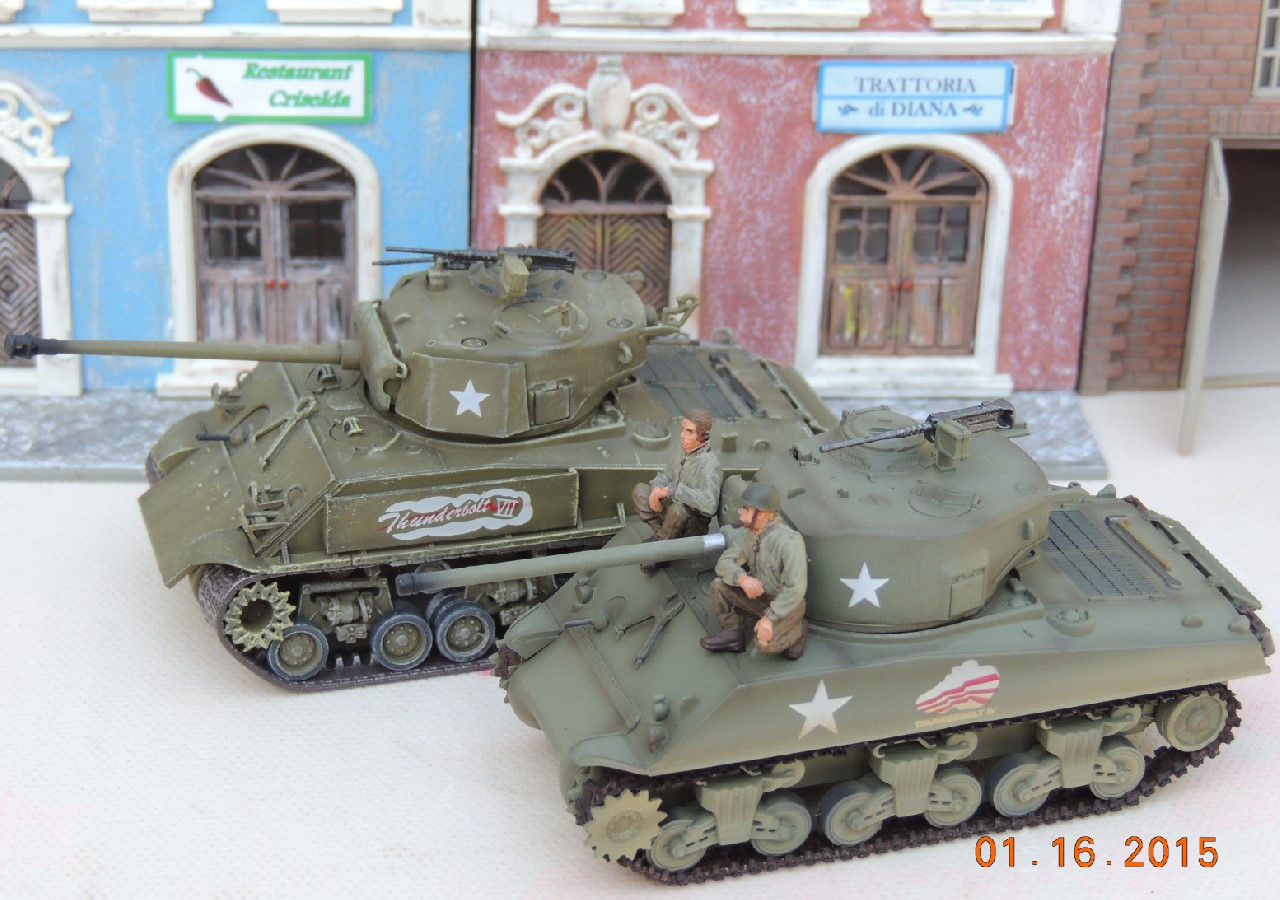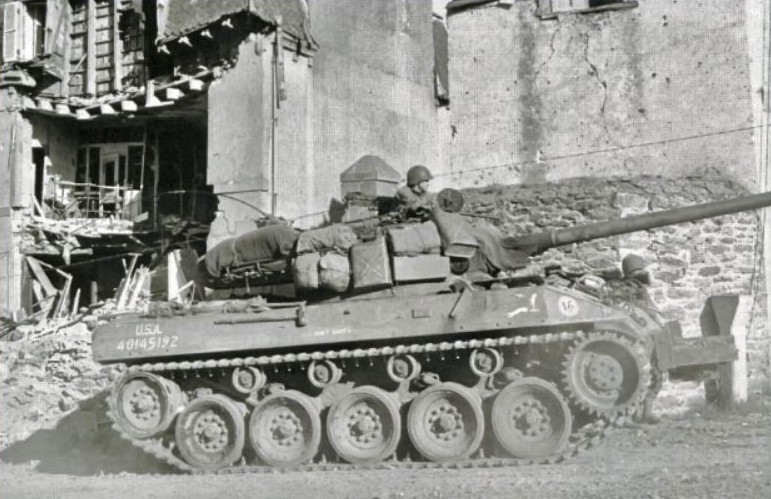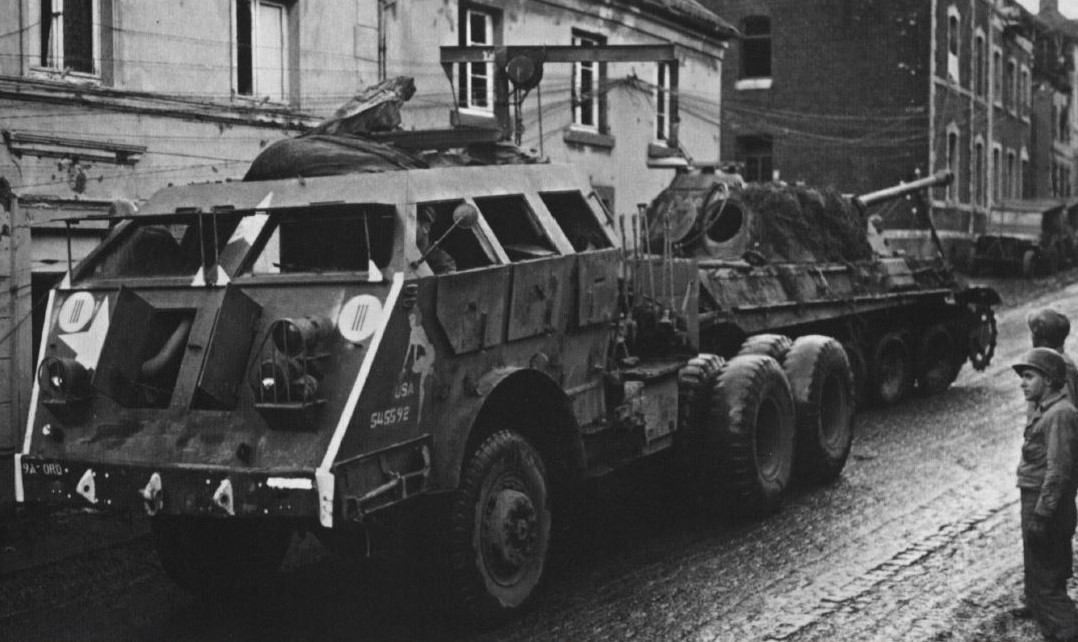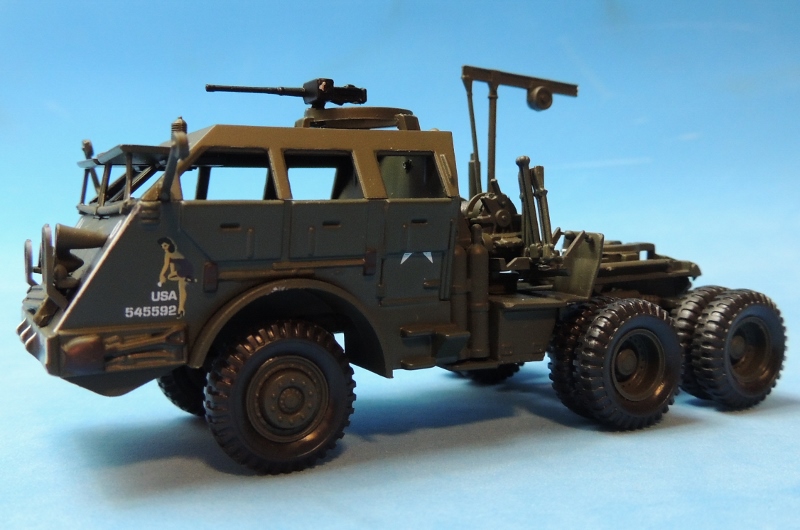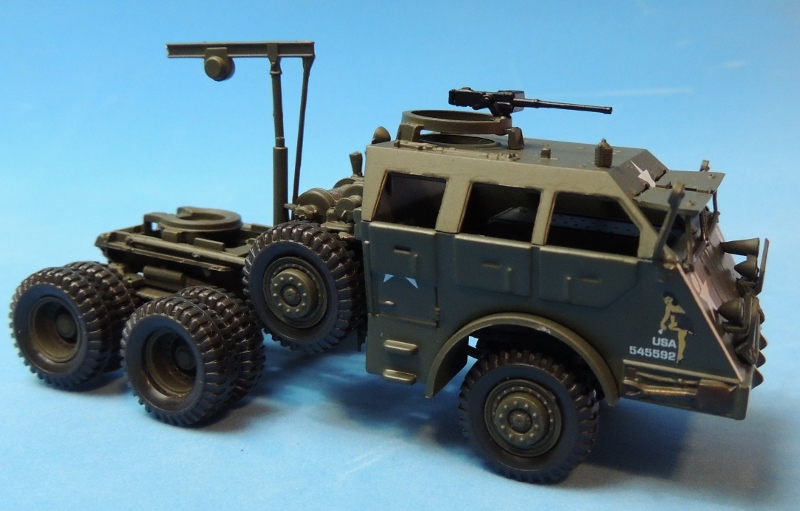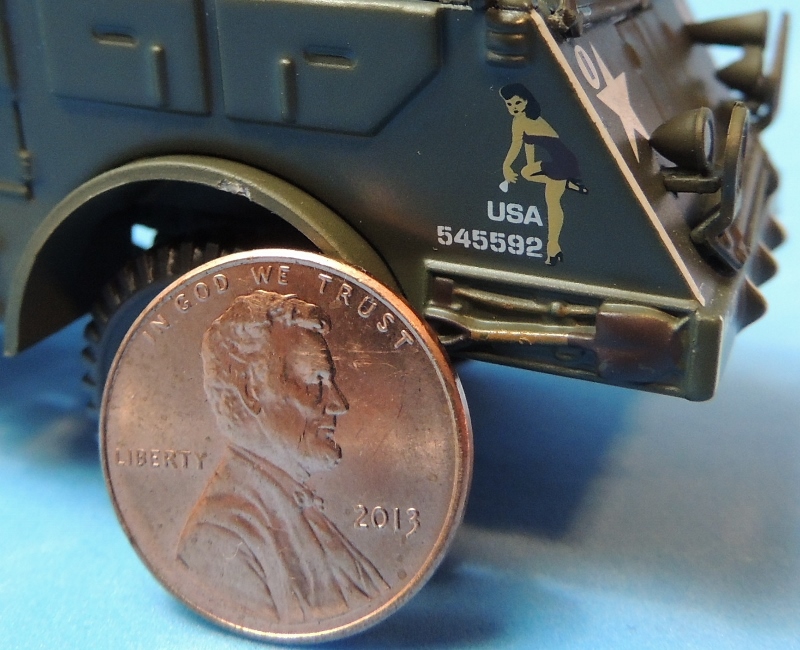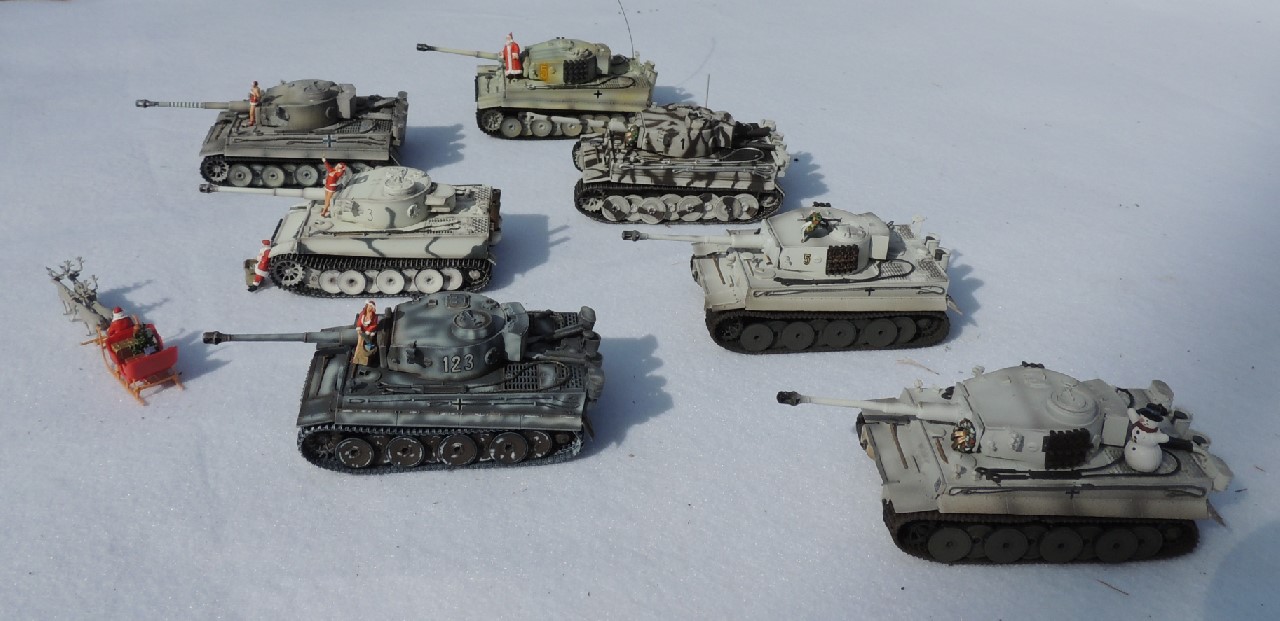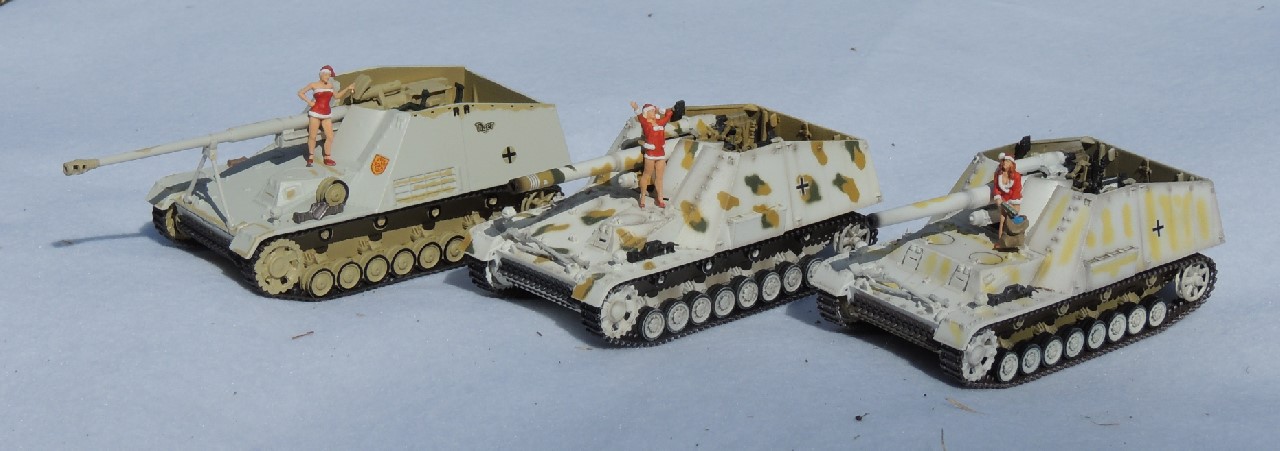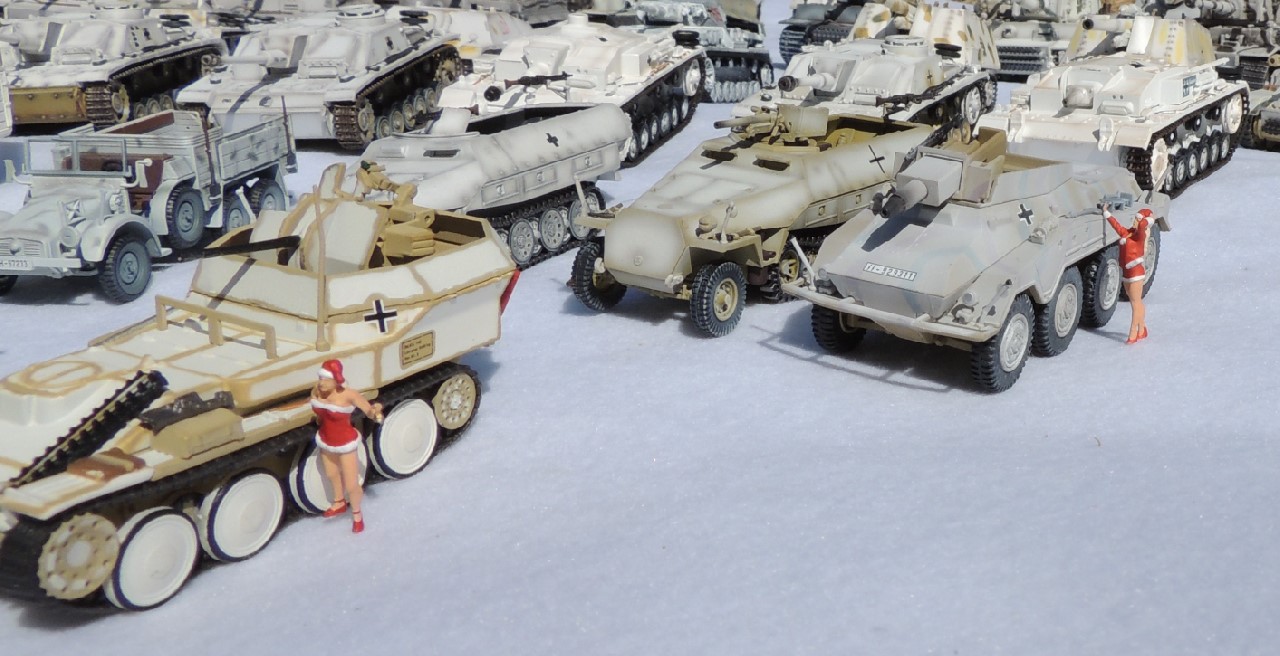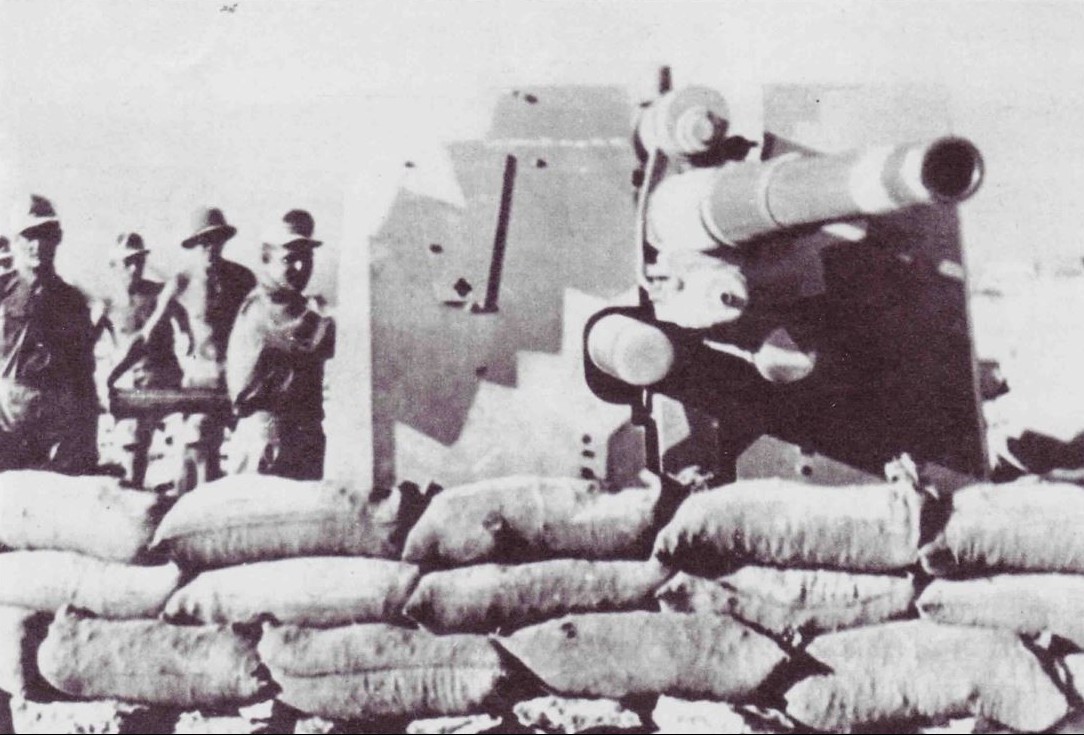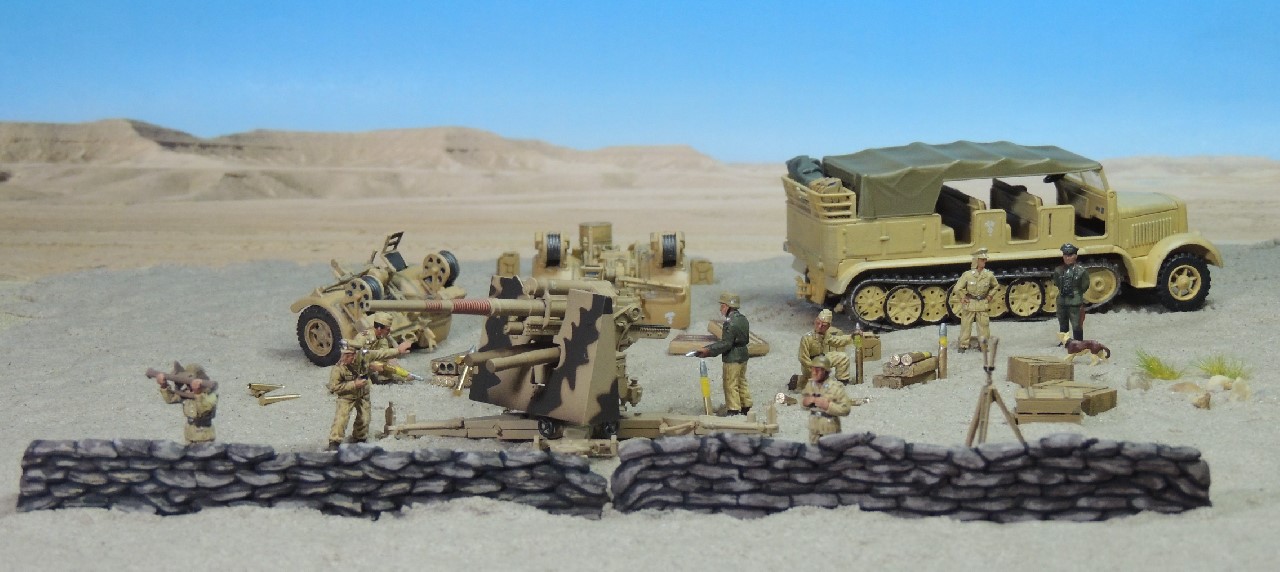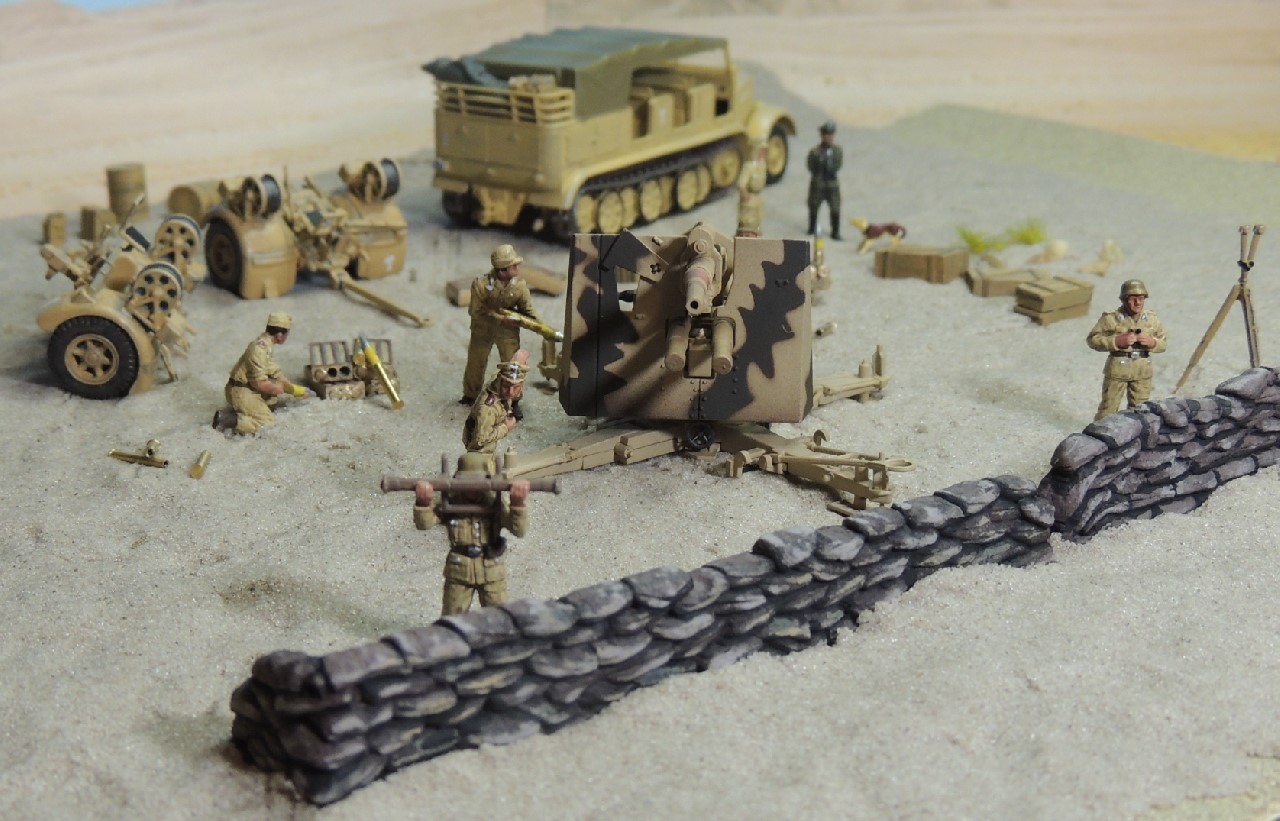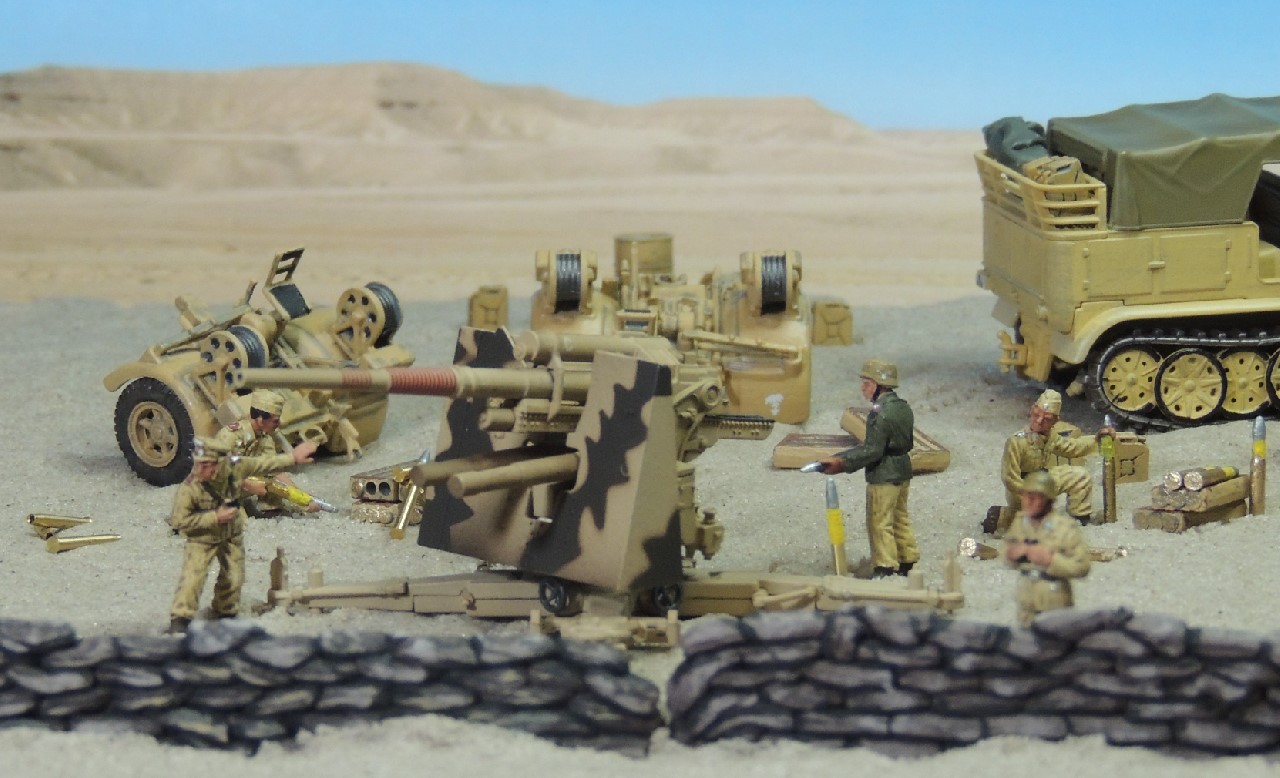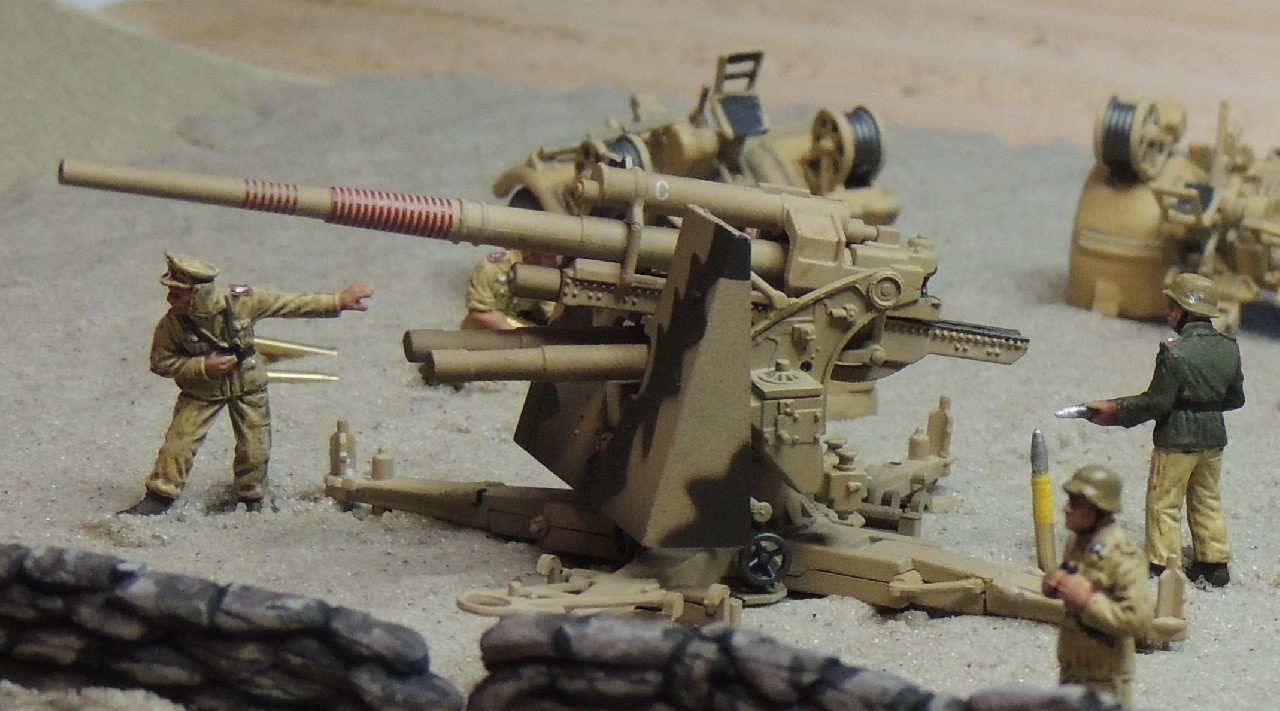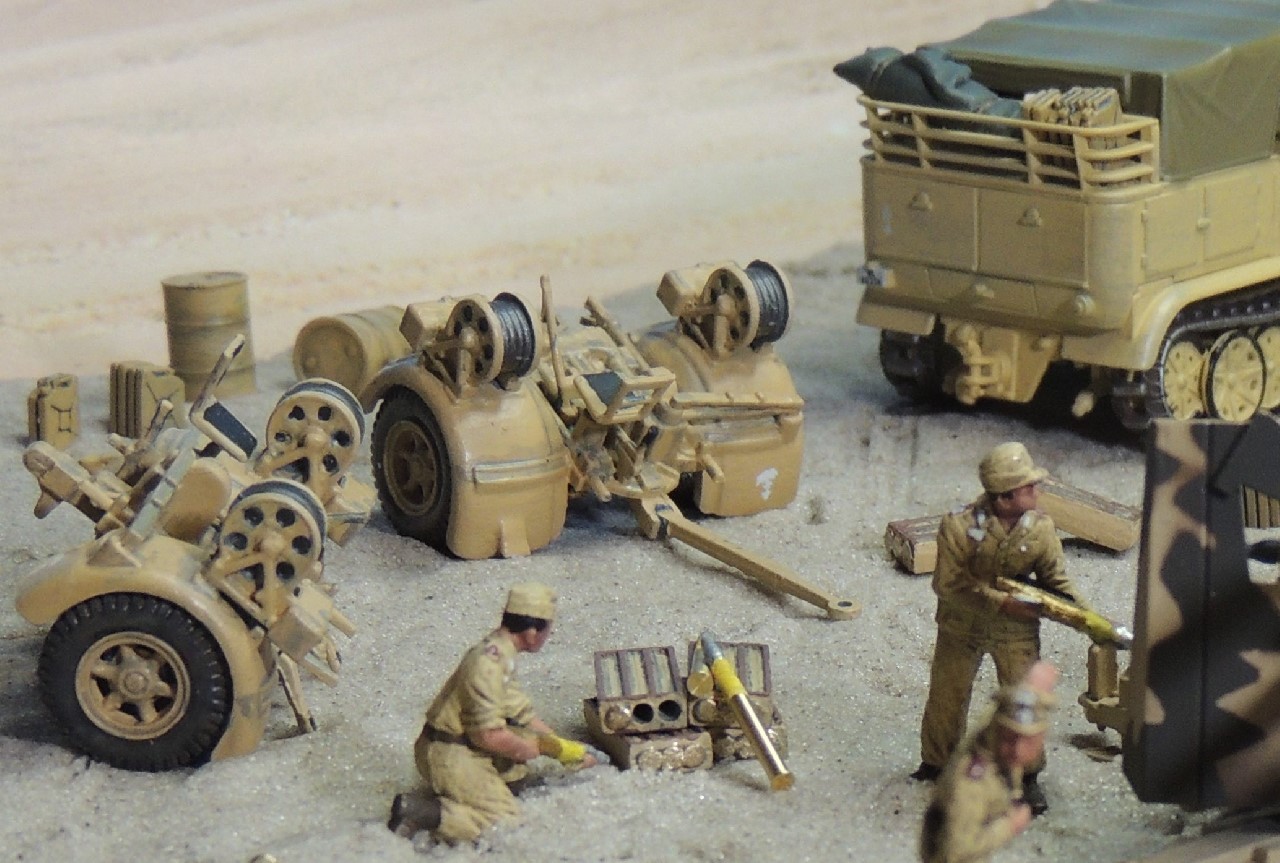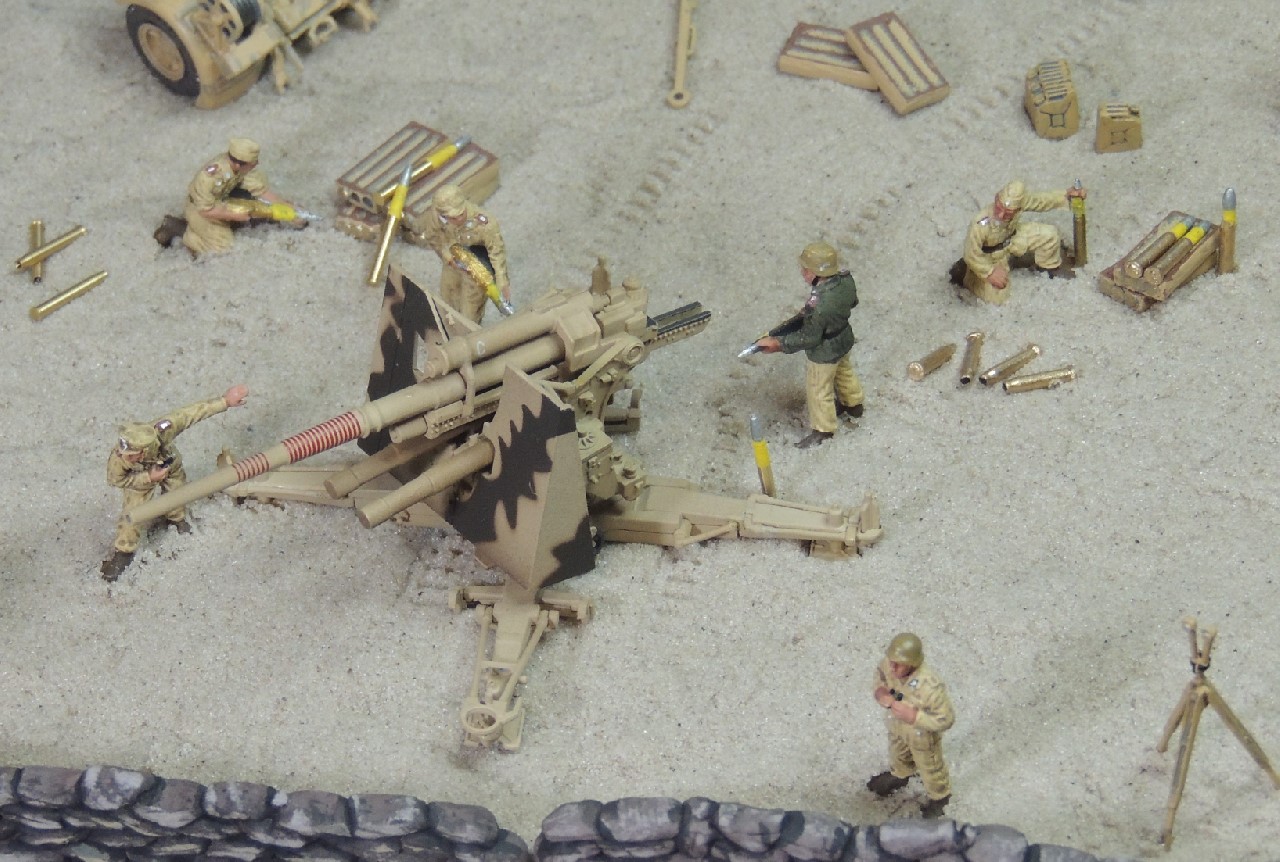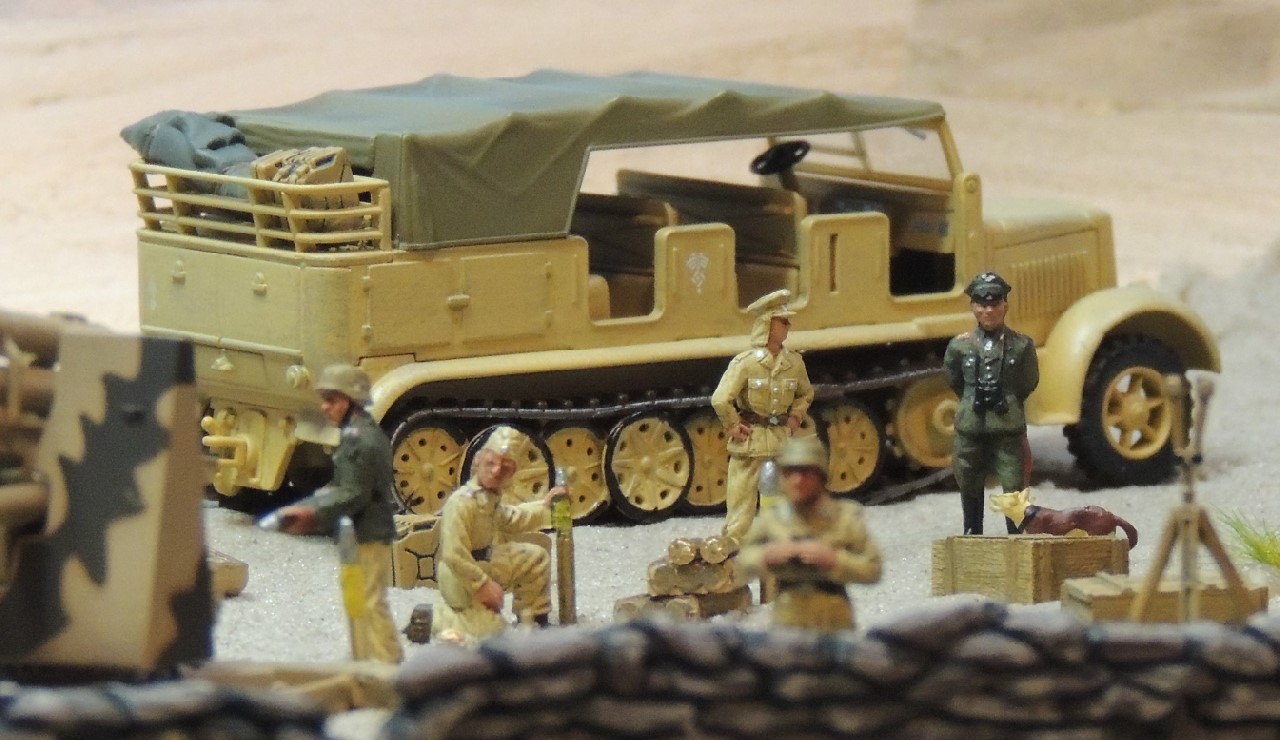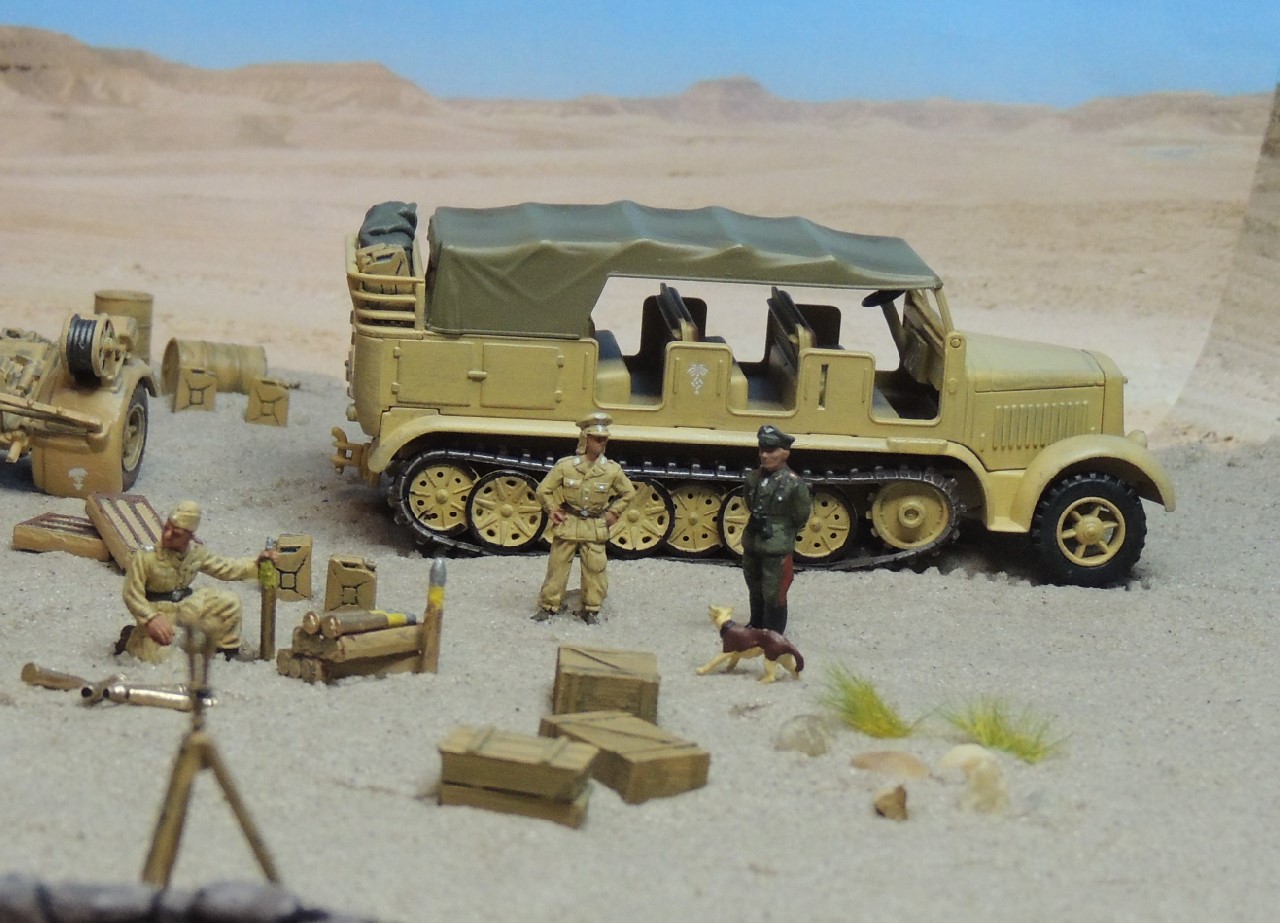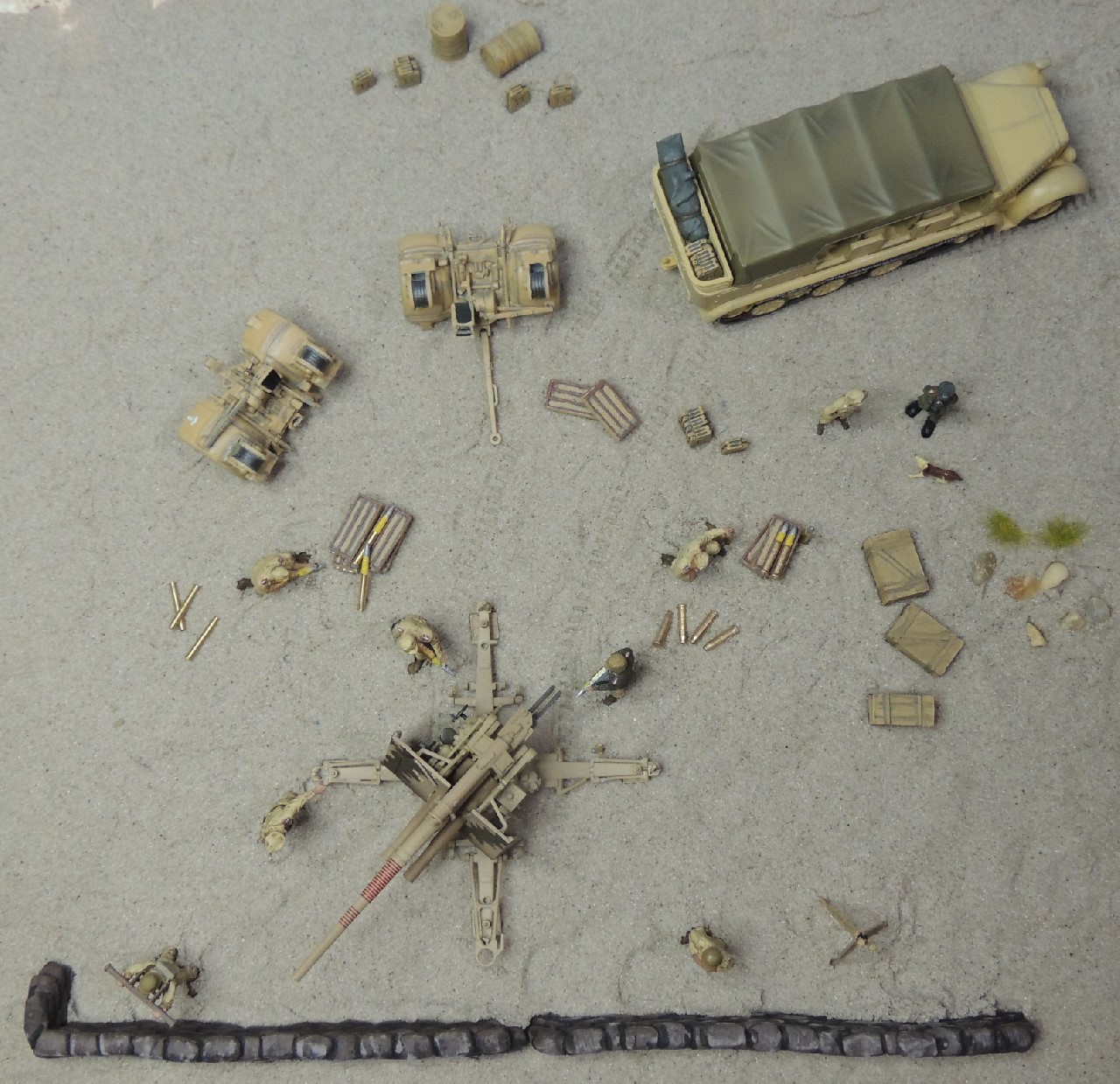On February 19, 1945, 30,000 U.S. Marines of the 4th and 5th Marine Divisions landed on the beaches of Iwo Jima, a tiny pork chop-shaped island measuring eight square miles in the middle of the Pacific Ocean, halfway between Tokyo and Saipan. Many more Marines, including those of the 3rd Marine Division, followed in subsequent days. Iwo Jima was of immense strategic importance to the U.S. war effort in the Pacific, as fighter aircraft, whose range was far less than that of larger bomber aircraft, would be able to use it as a staging area to escort U.S. bomber aircraft taking off from the Marianas on their way to Tokyo, providing indispensable protection from Japanese Zero fighters. In addition, U.S. bombers returning from Japan would have an airstrip to use as a refuge should they be damaged or otherwise incapacitated while carrying out their missions. In fact, 859 U.S. bombers made emergency landings at Iwo Jima beginning in March 1945.
I’ve modified the map below, from Collins Atlas of the Second World War, to show the strategic importance of Iwo Jima as a staging area for fighters escorting bombers originating in the Mariana Islands (Guam, Tinian, Saipan).
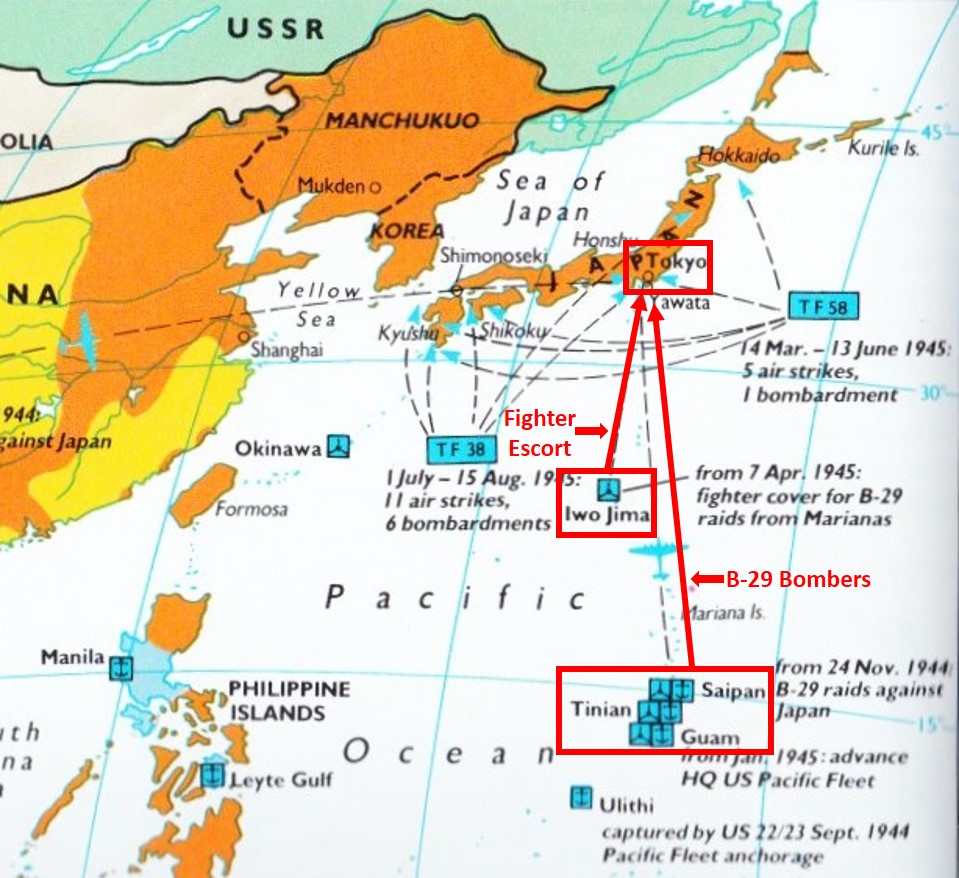
For a detailed history of the Battle of Iwo Jima, the reader must consult other sources, as my focus here is on 1/72 scale vehicles. Suffice it to say that the Marines took Iwo Jima after over a month of the fiercest and bloodiest fighting the Marines had ever faced, costing the lives of almost 7,000 Marines plus over 19,000 injured. Of the estimated 21,000 Japanese who defended the island, just over 200 survived. The Japanese had hoped that the high cost in American lives at Iwo Jima would deter America from invading Japan. They succeeded. Based on the casualty count at Iwo Jima, American military strategists estimated that invading Japan would cost approximately 1 million American and 2 million Japanese lives. Ironically, to keep from invading Japan, the U.S. made the fateful decision to use the atomic bomb on Hiroshima on August 6, 1945, and on Nagasaki three days later.
This map of Iwo Jima, from the Wikipedia entry for the 28th Marine Regiment, shows the landing beaches well.
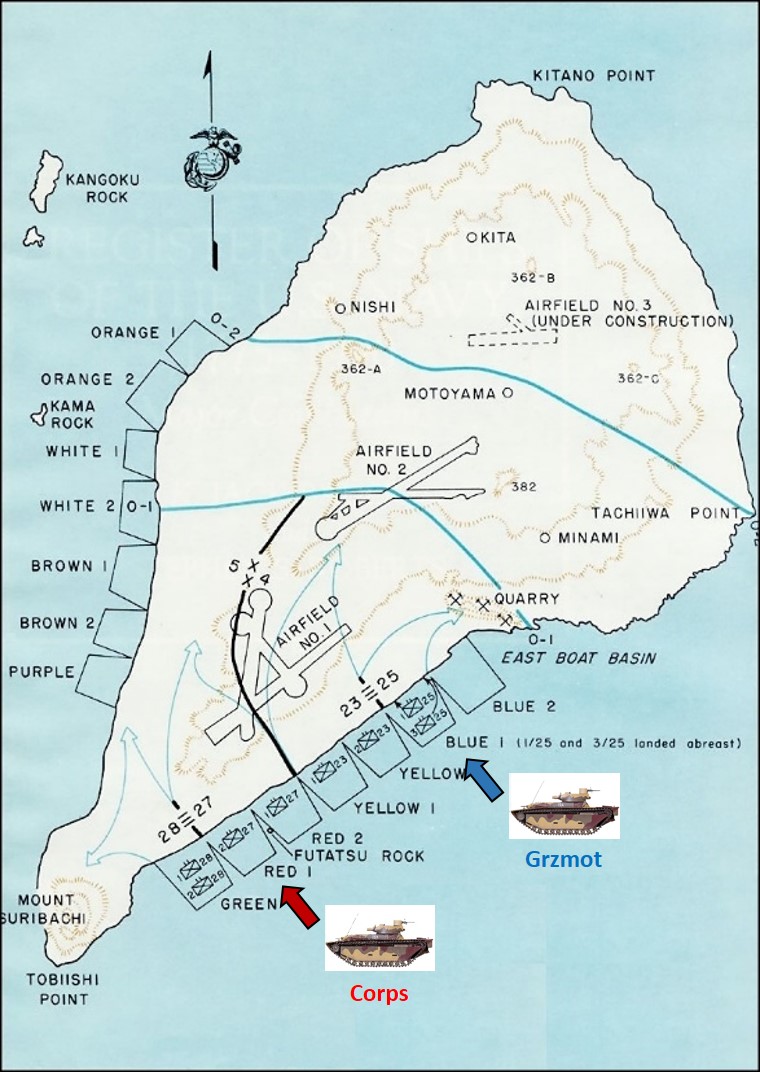
Today, on the seventy-first anniversary of the Battle of Iwo Jima, let’s remember and honor the almost 28,000 American and Japanese soldiers who forfeited their lives on that tiny speck of an island, as well as the over 19,000 others who were injured during that battle.
Landing Vehicles Tracked (Armored) at Iwo Jima
The U.S. Navy had bombarded Japanese positions at Iwo Jima for three days prior to the invasion on February 19. When bombardment ceased to allow the Marines to land, 68 amphibious armored landing vehicles (LVT(A)-4’s) of the four companies of the 2nd Armored Amphibian Battalion accompanied the Marines to provide protection, suppressing fire from entrenched Japanese positions.
By February 1945, the armored tracked landing vehicle, commonly known as an “amtank,” had evolved from the LVT(A)-1 with its 37mm peashooter to the LVT(A)-4, which carried a 75mm howitzer gun in an open turret and a 50mm caliber machine gun to protect against infantry attacks. In addition, the experience gained in the Mariana Islands had by then taught the Marines to utilize the LVT(A)-4’s effectively in amphibious operations, using them during the landing at the beaches and then relying on M4A2 Sherman tanks inland for close fire support. An additional 380 LVTs – landing vehicles without the 75mm gun turret — ferried Marines and cargo to the beaches.
These drawings, from Jim Mesko’s Amtracs in Action: Part One, provide a good idea of the differences between LVT(A)-4’s and LVT(A)-2’s. I’ve added the numbers of each at Iwo Jima.
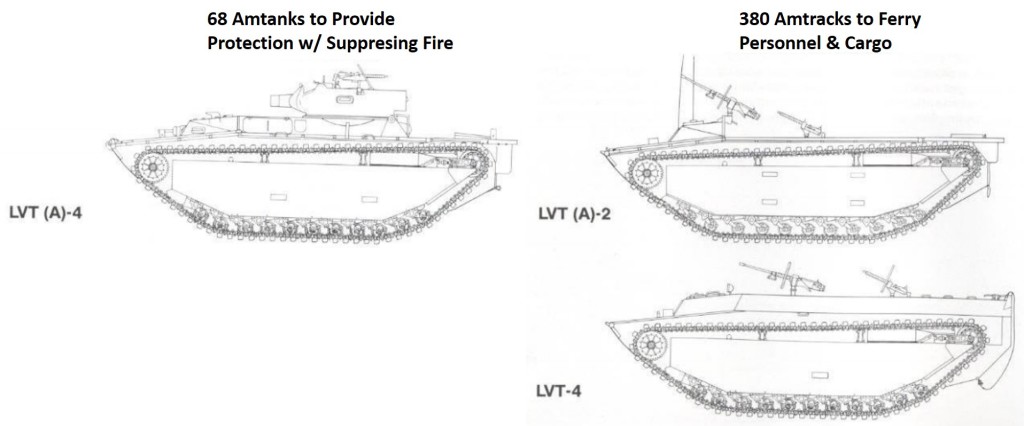
To save a trip to Wikipedia for those not familiar with the LVT(A)-4, here’s a synopsis from David Harper’s Project LVT’s: Amtanks:
“The LVT(A)-4 Amtank was a direct descendant of the earlier LVT2 Amtracs. Production of the new “Amtank” vehicles began in 1944. The LVT(A)-4 came about from the US Marines’ request for increased turret fire power from the earlier LVT(A)-1’s high velocity 37mm weapon (mounted in an M5 type turret). The result was the mounting on an M8 “Stuart” type turret which mounted a 75mm Howitzer. . . . The LVT(A)-4 was first used in the Marianas campaign during the invasion of Guam, Tinian, and Saipan. The US Marines used 535 of the vehicles to equip three Amtank battalions while the US Army equipped seven Amtank battalions with the 1,300 LVT(A)-4s they were issued.”
To my knowledge, only Hobby Master and Dragon have released 1/72 versions of the LVT(A)-4. To date, Hobby Master has released two, the HG4402 and the HG4408, while Dragon has also released two — the 60425 and 60500. This comparison review covers the HG4402, named “Grzmot,” and the Dragon 60425, named “Corps,” both based on vehicles from the 2nd Armored Amphibian Battalion at Iwo Jima. (HG4408 and Dragon 60500 are based on vehicles used in other campaigns.) It bears mentioning that this is one of the few instances where two major manufacturers have produced the same vehicle in the same scale. Perhaps both Dragon and Hobby Master were looking to capitalize on the success of “The Pacific,” a television series widely acclaimed for its portrayal of the Pacific war where LVTs were extensively used.
The Actual Tanks
As always, let’s start with photos of the actual vehicles. First here’s a photo from the Naval History and Heritage Command (photo 80-G-303914) of the “Corps,” whose tactical number “D35” on the sides of the hull superstructure identifies it as being from D Company, being hoisted unto the USS Hansford in preparation for the invasion. Tactical numbers had by this time become smaller, as the larger numbers previously used on the side of the hull presented an alluring bull’s-eye for Japanese artillery. 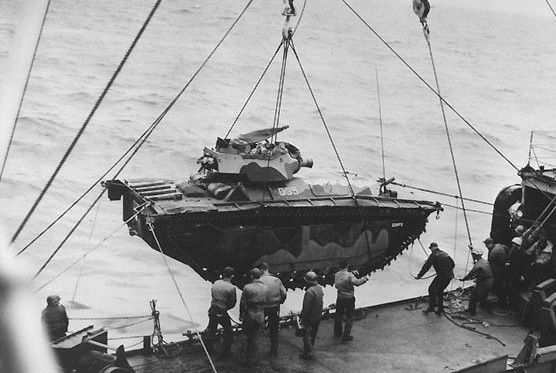
Here’s a photo from the Naval History and Heritage Command (photo NH-104216) of the “Grzmot,” whose “A21” tactical number pinpoints it to A Company. We can reasonably assume that there was a Pole in the crew as “Grzmot” means “Thunder” in Polish.

The Models
Here is the Hobby Master HG4402: LVT(A) -4, US Marines, 2nd Armored Amphibian Battalion, Iwo Jima 1945.
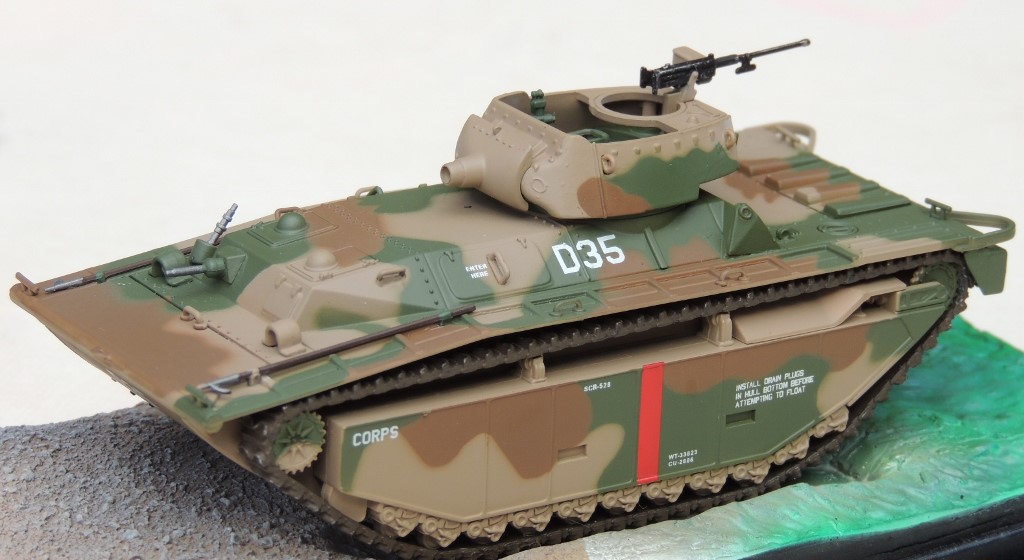

And here’s the Dragon 60425: LVT(A)-4, US Marines, 2nd Armored Amphibian Battalion, Iwo Jima 1945.
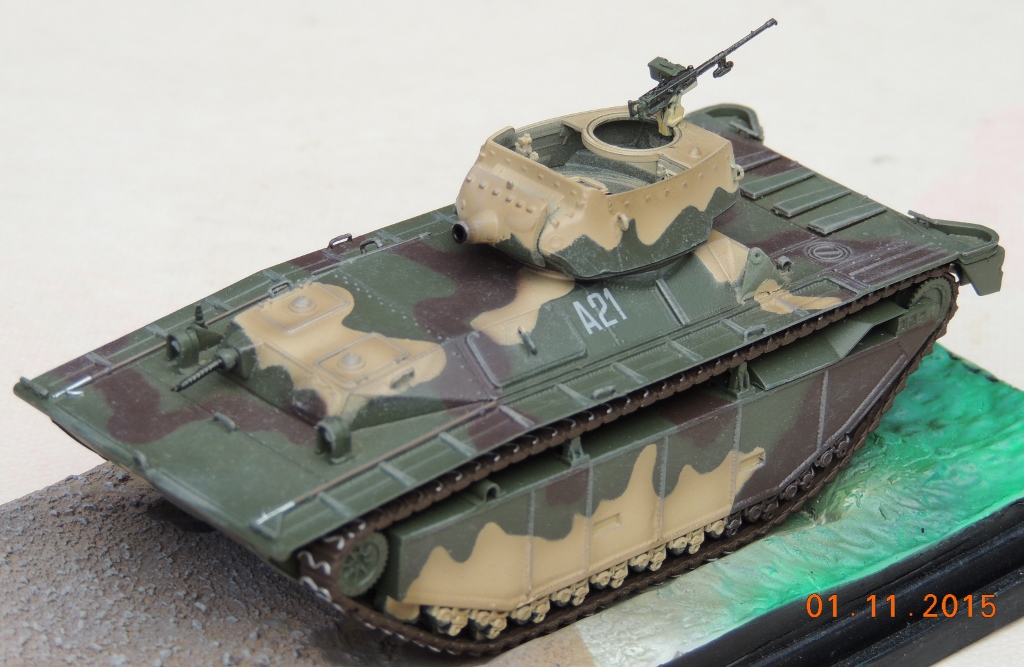
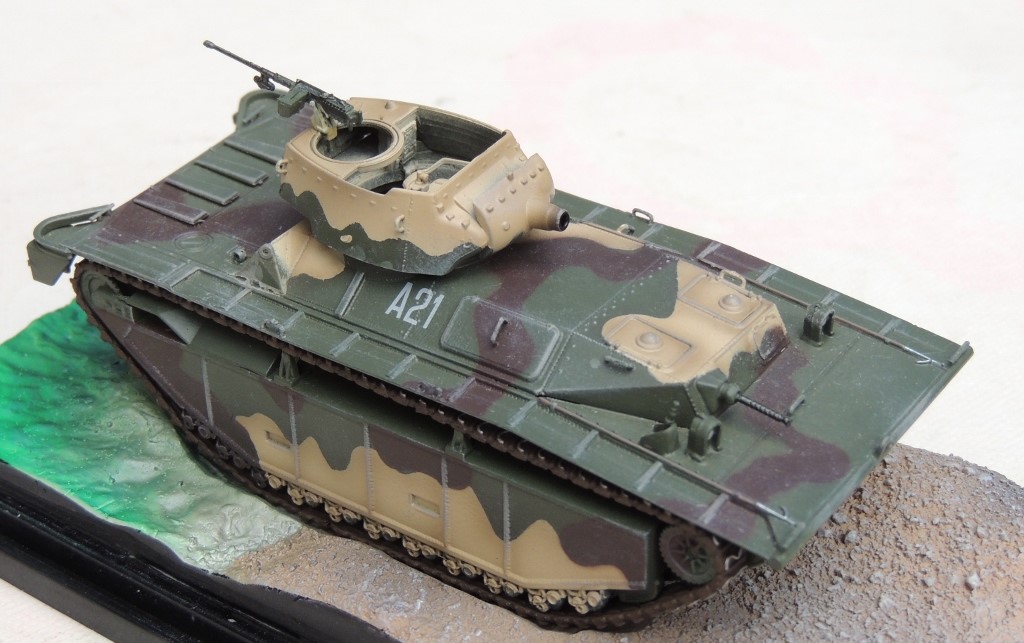
The markings on the Hobby Master HG4402 are terrific. Markings are extremely important in models, as they individualize the vehicle, and most collectors are far more likely to purchase a model with markings than without. The vertical red bar indicates that “Corps” landed at Red Beach 1, on the southeastern coast of Iwo Jima. The map of Iwo Jima above shows the locations of the various beach landing areas.
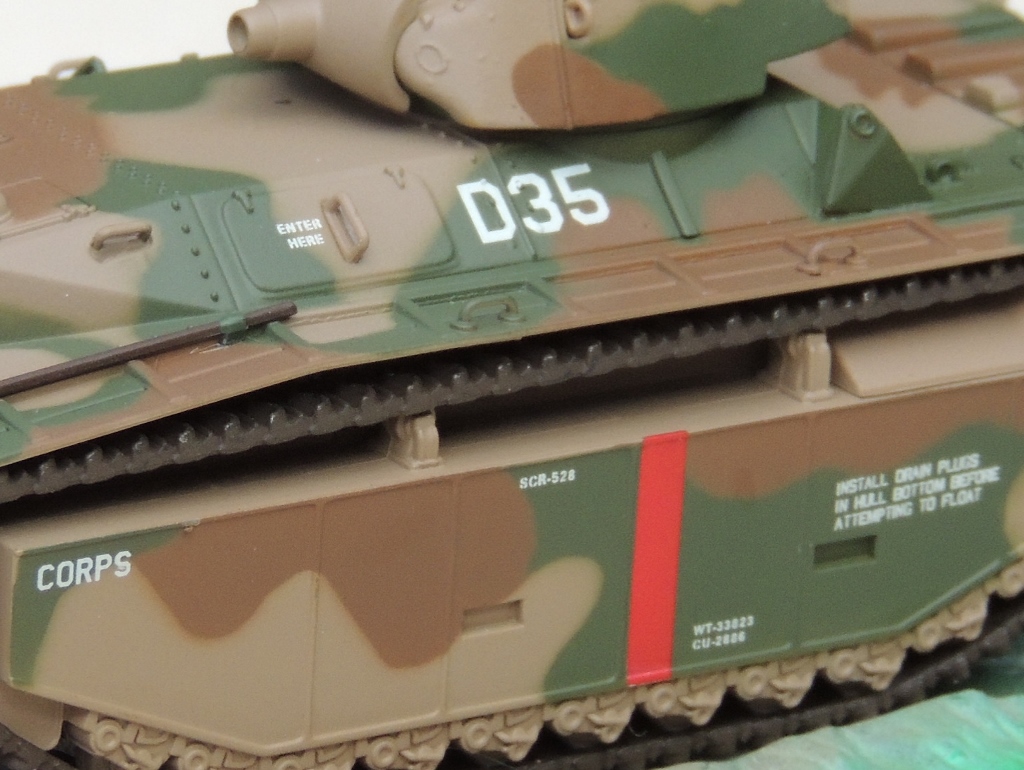
Note that the Dragon 60425 has no markings other than the tactical number “A21”. Note also that Dragon inexplicably — and unforgivably — omitted from its model the name “Grzmot,” clearly seen on the front of the hull on the starboard side in the photo of the actual tank. While the “Grzmot” did not have bars indicating the beach to which it was assigned, one internet source indicates it landed at Blue Beach 1. See the map of Iwo Jima above. On the plus side, note the superb weathering on the tracks of the Dragon 60425, which makes them really stand out.
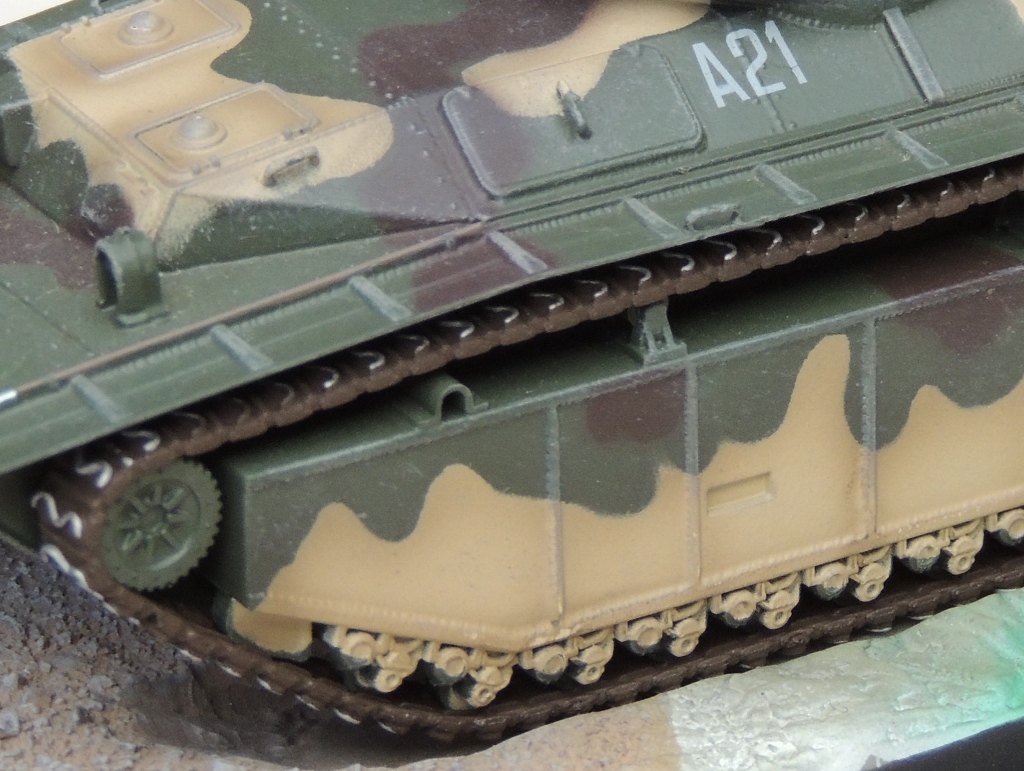
The escape hatches on the Hobby Master HG4402 are more realistic and the hooks are separate pieces, whereas on the Dragon 60425 they are molded into the body.
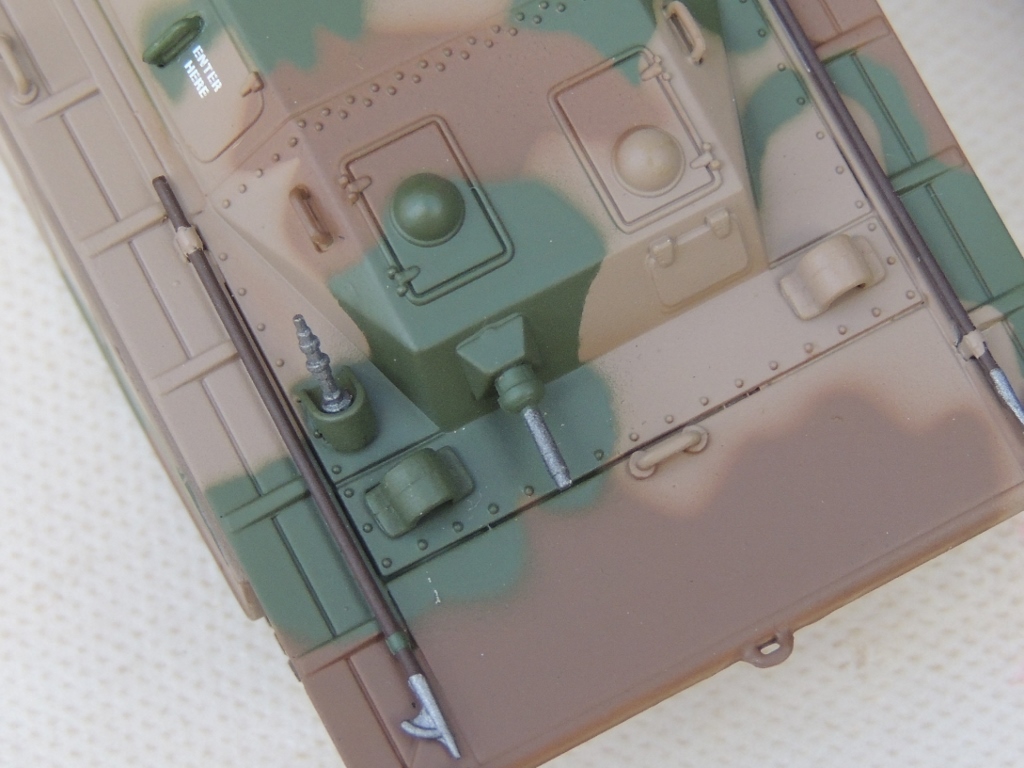

Seen from the back, the Hobby Master HG4402 looks to be in pristine condition fresh off the factory, whereas it’s pretty clear that the Dragon 60425 has been dry brushed, giving it a weathered effect. Note the more detailed cable ends on the Hobby Master HG4402. Note also that the company letter and tactical number were also carried on the rear of the hull.
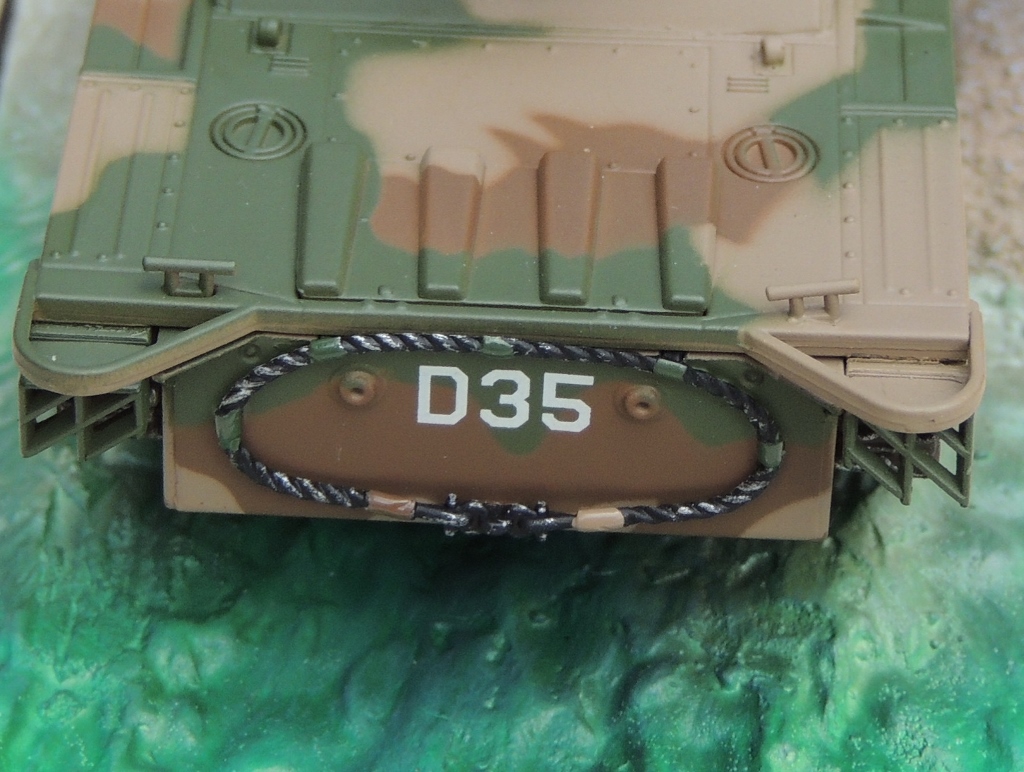
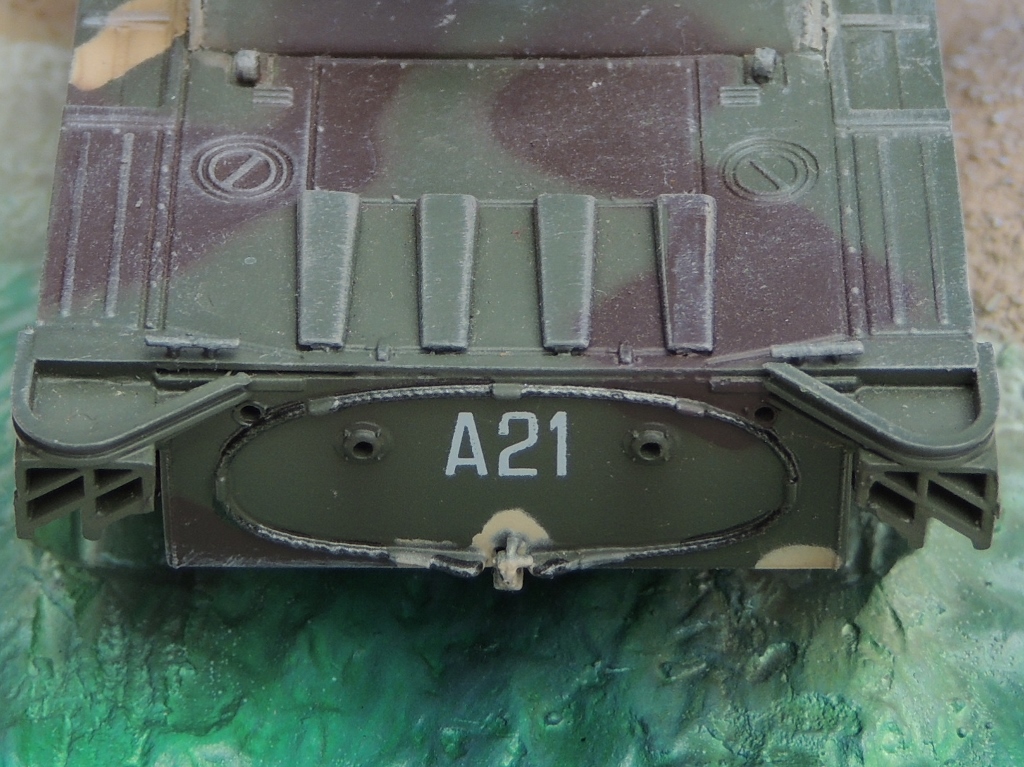
The surprise comes from this top view of the interior. The Hobby Master HG4402 does not have seats. The Dragon 60425, on the other hand, has a fairly detailed interior, complete with a turret basket, and seats. Also note the black weathering on the inside of the barrel on the Dragon 60425. Note that neither model has the protective tub for the machine gunner — very likely a field modification — seen in the photos of the actual vehicles.
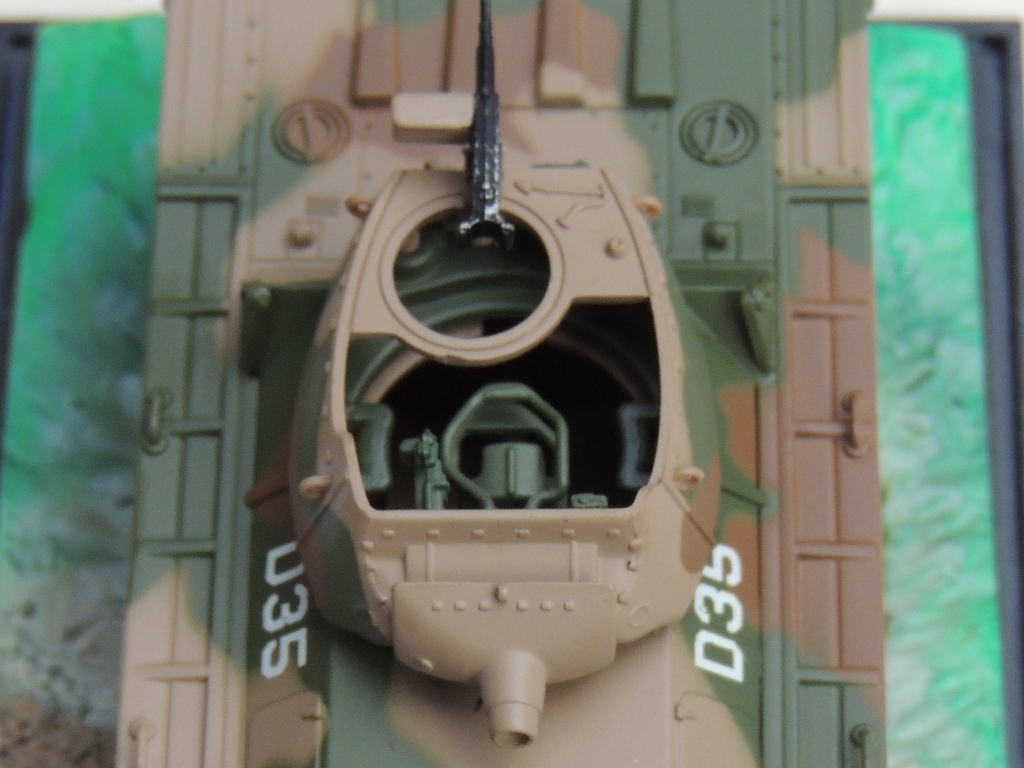
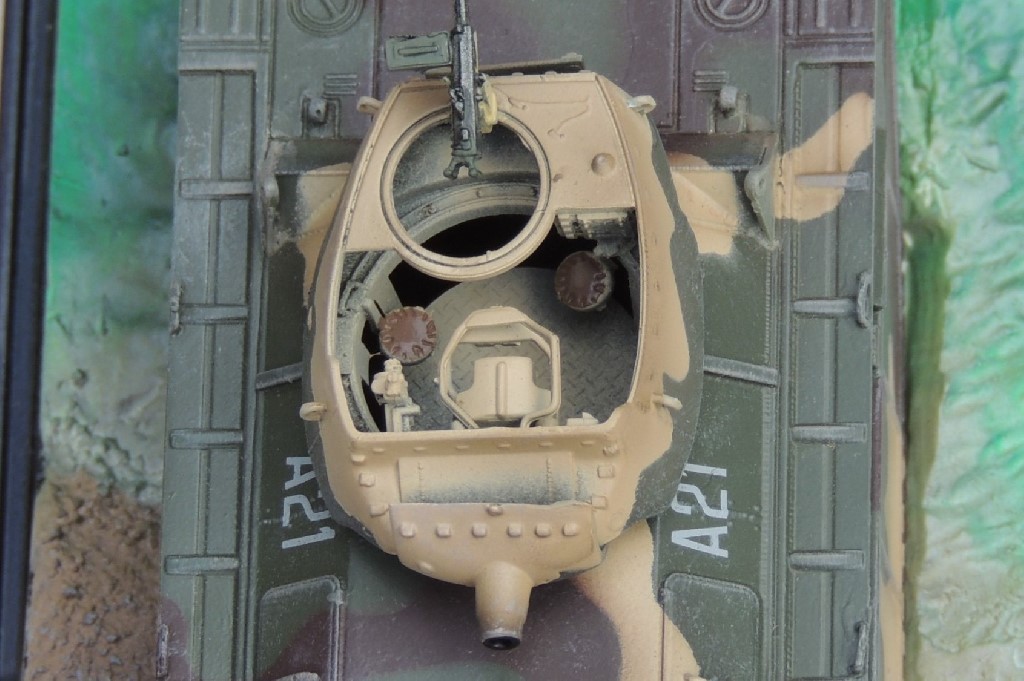
Here’s a lagniappe photo of the two, side by side.

The Profiles
For those of us who love profiles, here’s one of each of these two models. This first one of the “Corps” is from Amtracs in Action: Part One, by Jim Mesko, Color by Don Greer & Tom Tullis, Illustration by Joe Sewell.
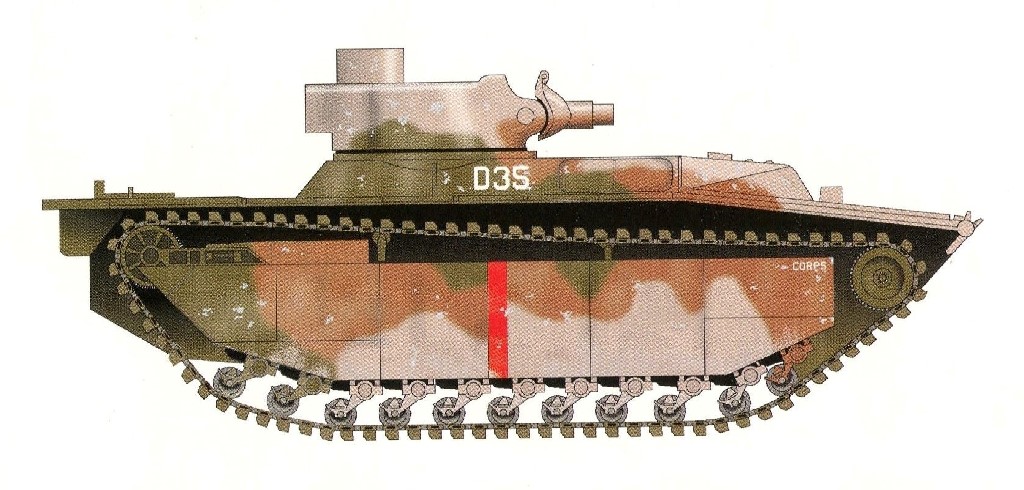
This profile of the “Grzmot” is from US Amtracs and Amphibians at War 1941-45, by Steven J. Zaloga and George Balin, Color plates by Arkadiusz Wrobel. Note that the artist did not include the name “Grzmot.” I firmly believe Dragon failed to include it because it relied on this profile.
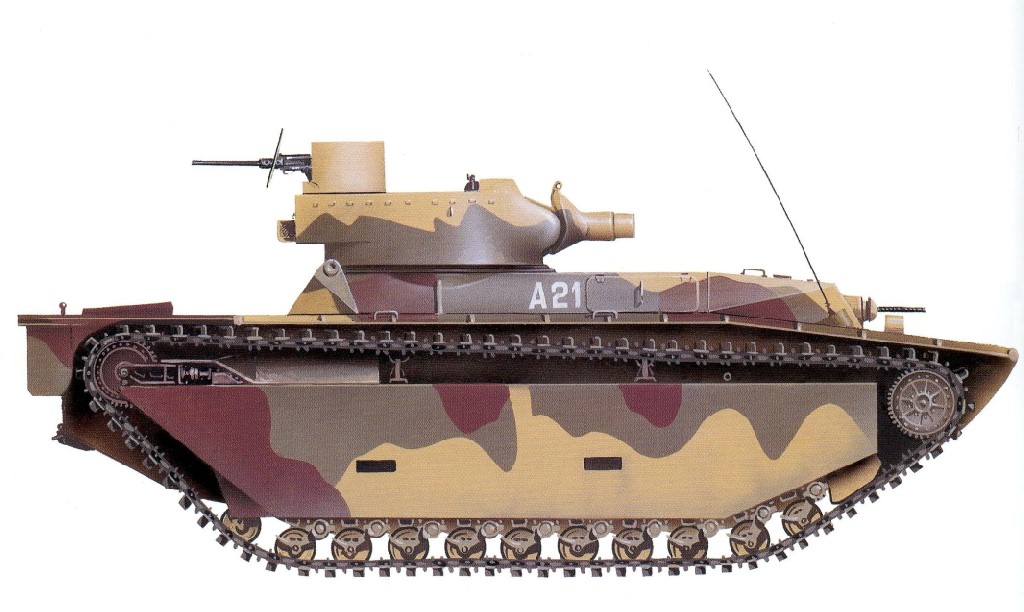 The Upshot
The Upshot
This being a comparison review, the reader will naturally wonder which model is more accurate. Let’s compare the various features:
- Heft: The lower hull of the Hobby Master HG4402 is metal, while the rest is plastic. The Dragon 60425 is entirely plastic. The weight of the Hobby Master HG4402 feels considerably more satisfying on the hand.
- Surface Detail: Given that both have plastic upper hulls, which allows more crisp detail than metal, they’re about even, though the hatches on the Hobby Master appear to be more realistic.
- Markings: The Hobby Master has all the standard markings found on the real tanks. The Dragon does not. In addition, it’s unforgivable that Dragon did not include the name “Grzmot” on its model.
- Interior: No contest. The Dragon has far more interior detail, including a fairly elaborate turret basket.
- Weathering: No contest again, the Dragon has been very lightly dry brushed. The tracks on the Dragon have been weathered and are superior. In addition, the inside of the Dragon barrel has been blackened, contributing to an overall realistic effect. The Hobby Master, on the other hand, appears to be in factory fresh condition.
- Camouflage: Although both have a three-color scheme using olive drab, sand, and red brown, the appearance is very different. The Dragon’s appearance is dominated by olive drab, while sand is much more prominent on the Hobby Master. The camouflage on the Hobby Master more closely resembles most color profiles and is likely more accurate.
- Historical Basis: Both models have solid historical photographic support, with at least three photos of the “Corps” and one of the “Grzmot” known to exist.
As can be gathered from the above comparison, the two models are fairly evenly matched. However, Dragon’s boneheaded omission of the name “Grzmot” tilts the balance — at least for me — in favor of the Hobby Master.
I hope you enjoyed the post. As always, comments, questions, corrections, etc. are welcome.

